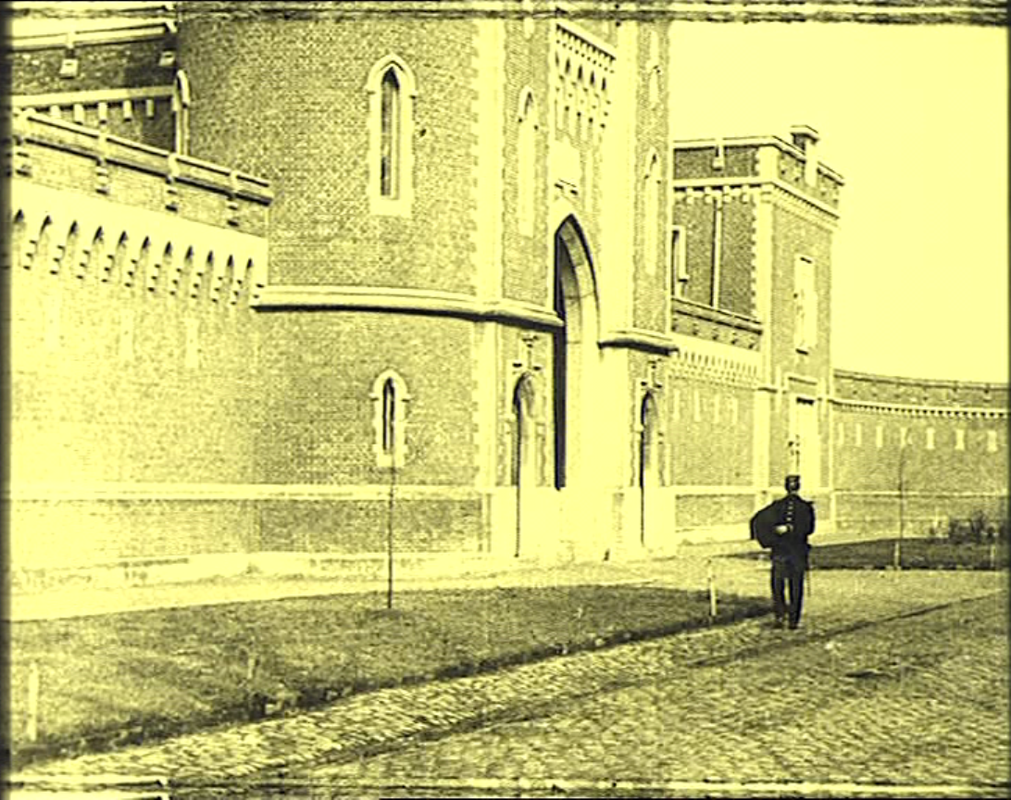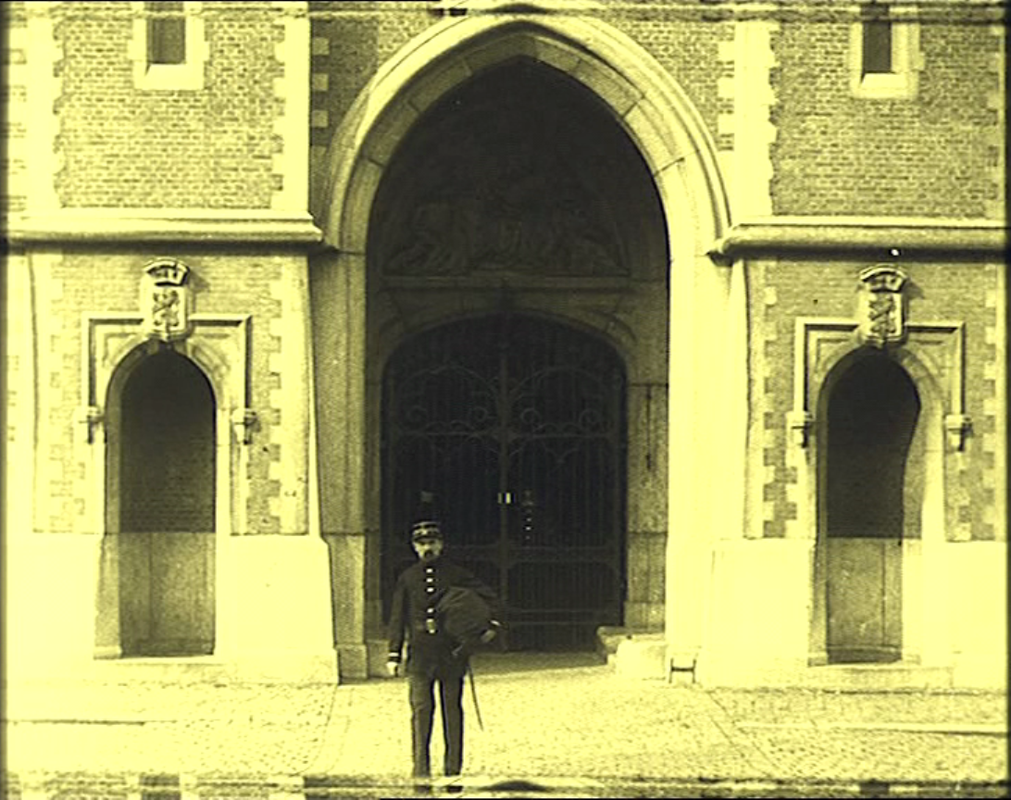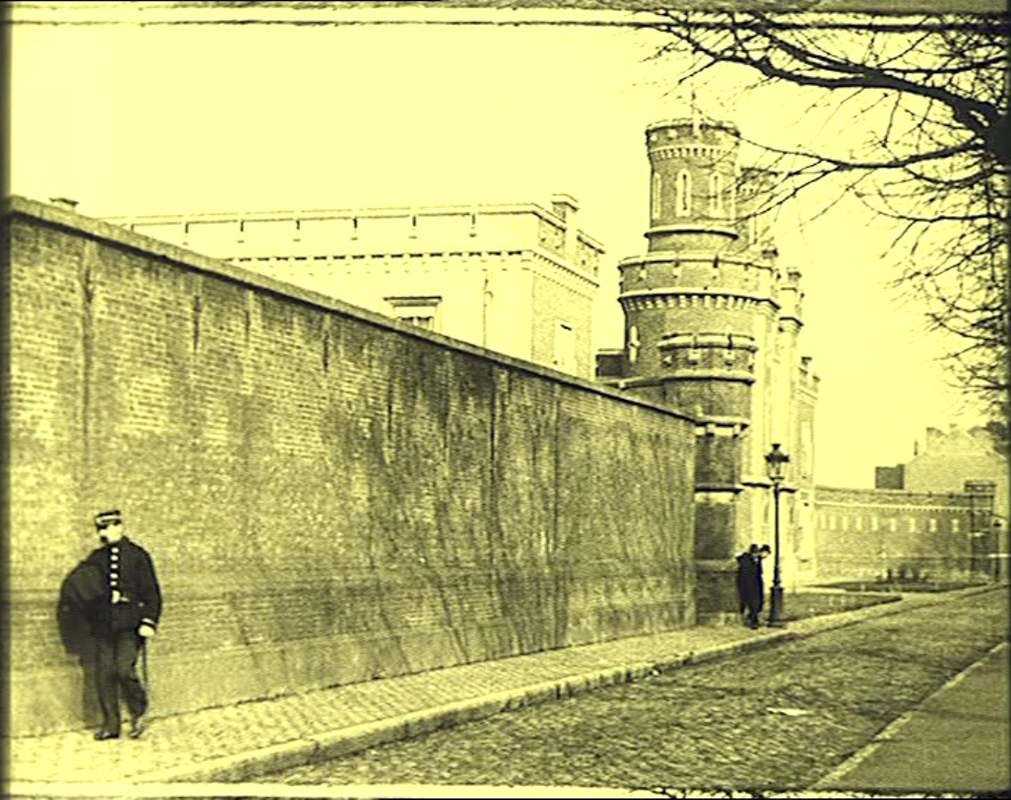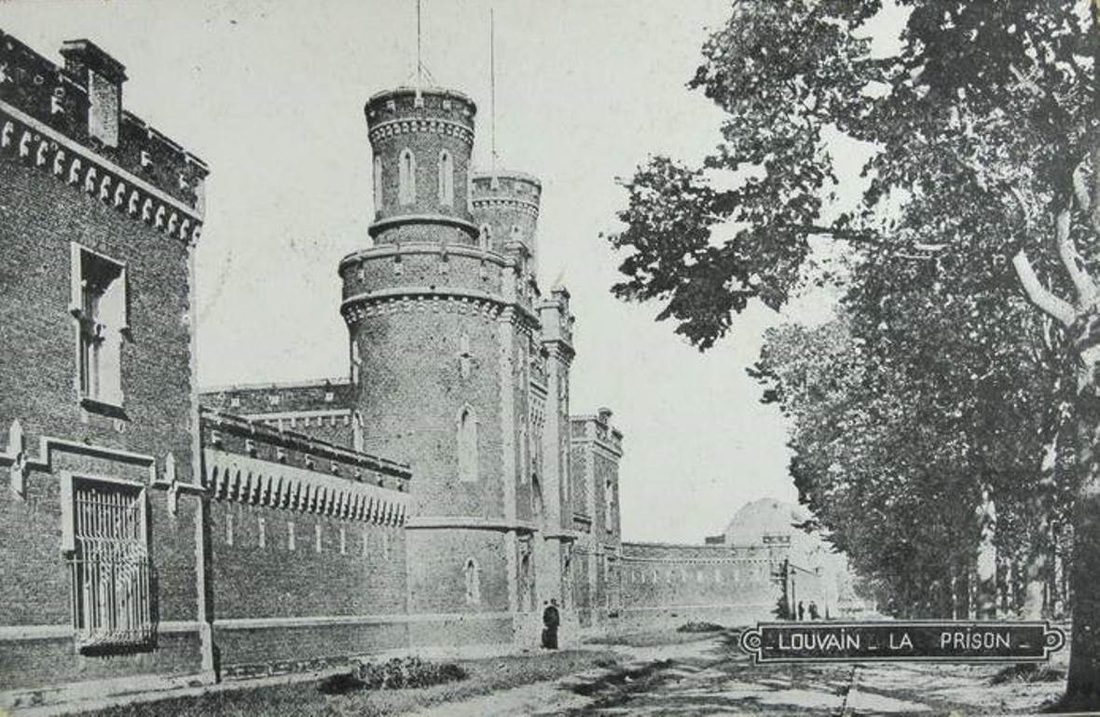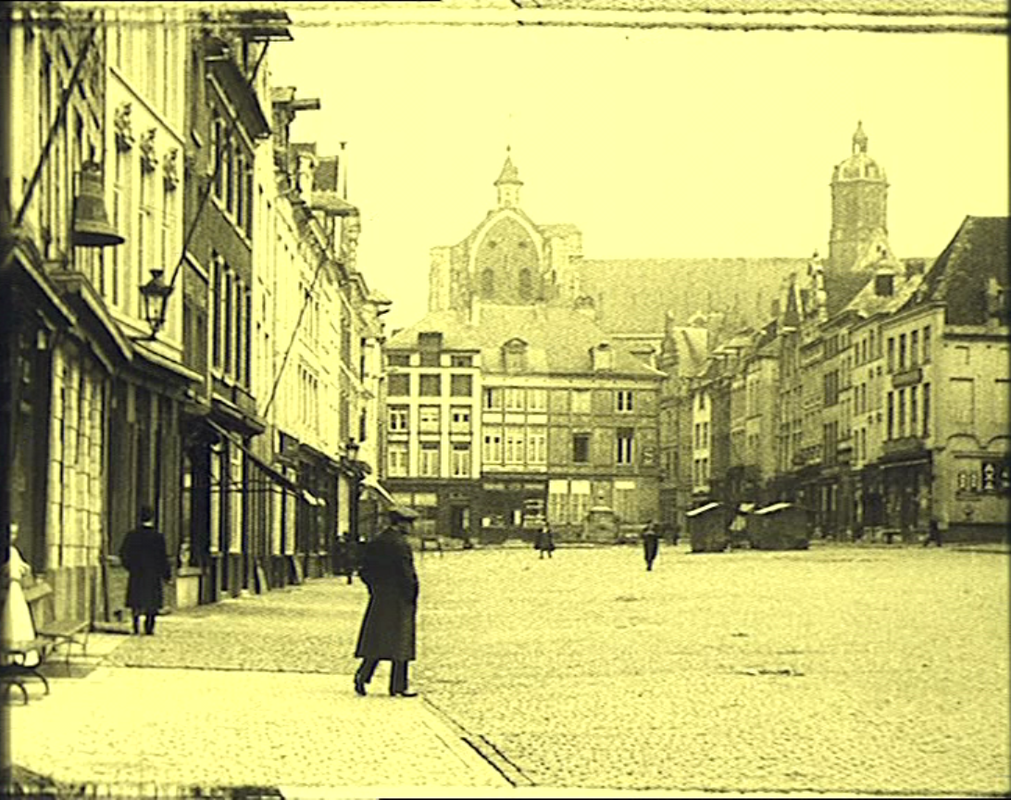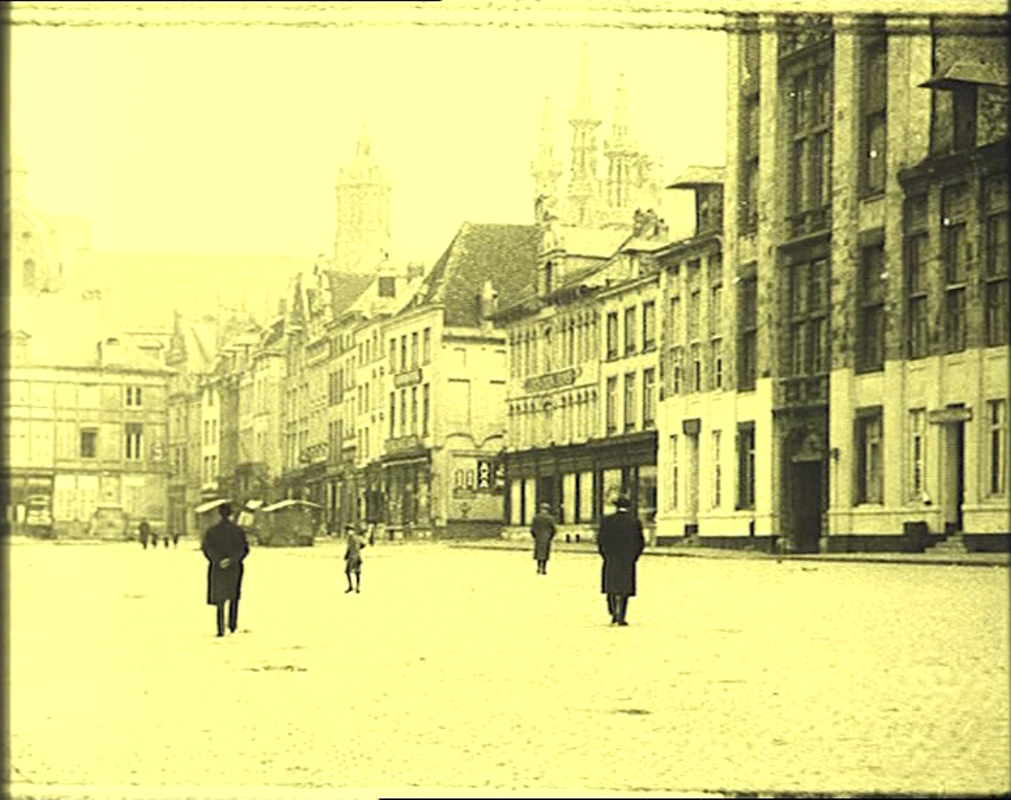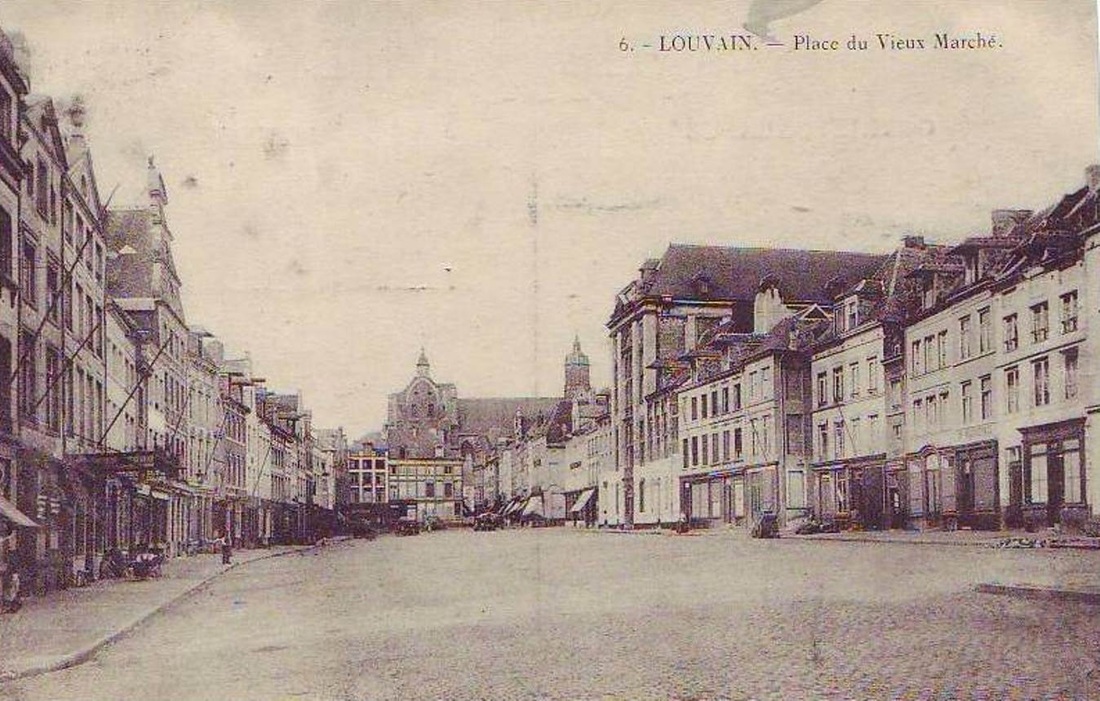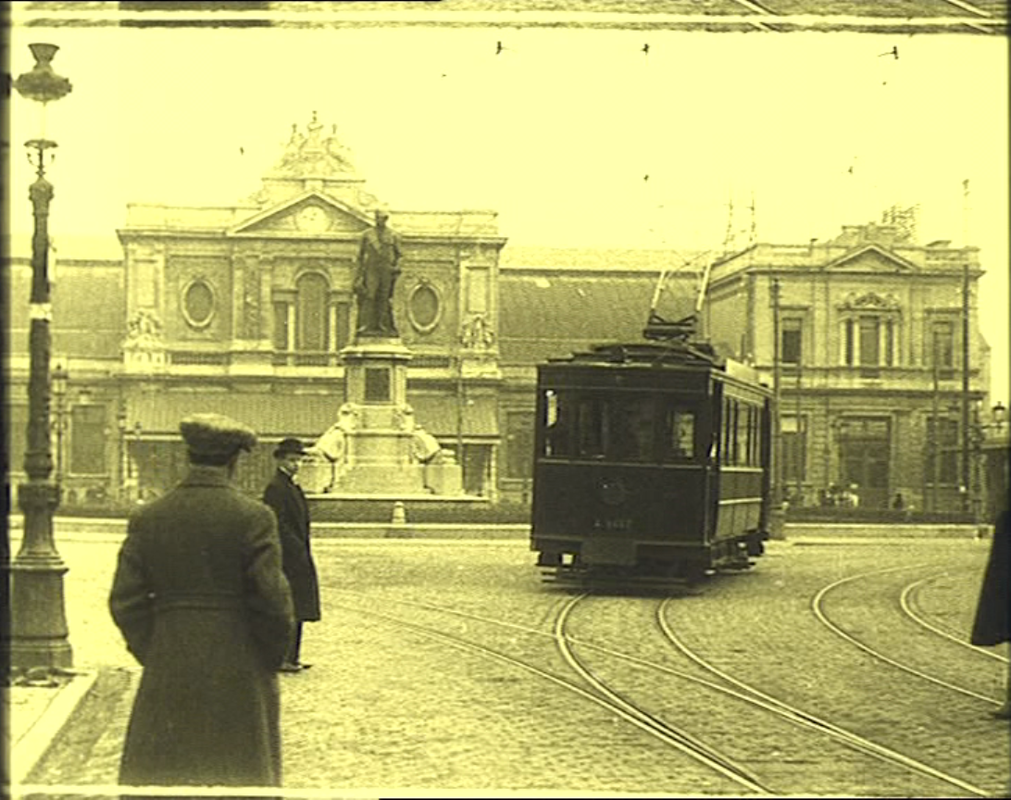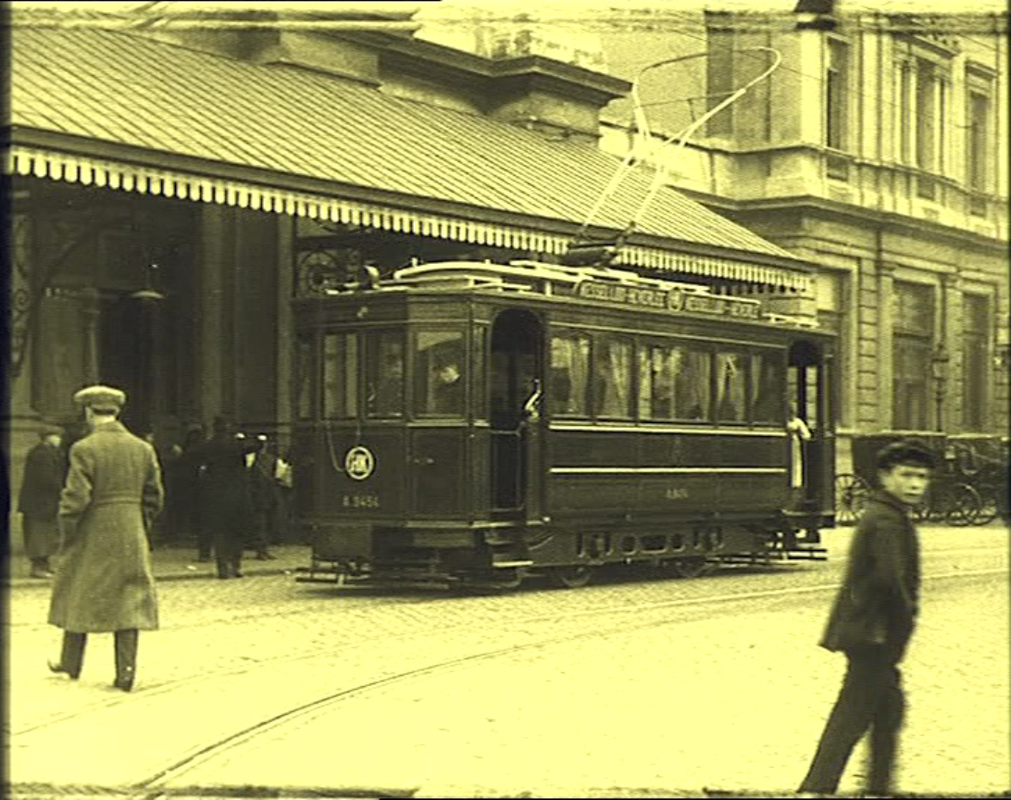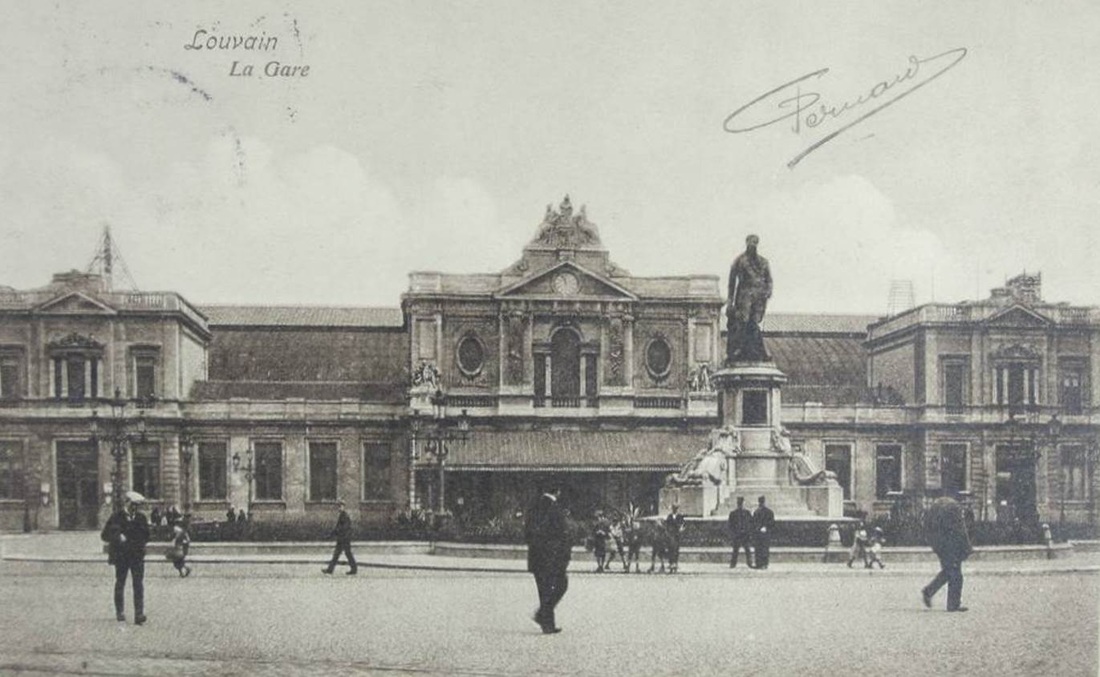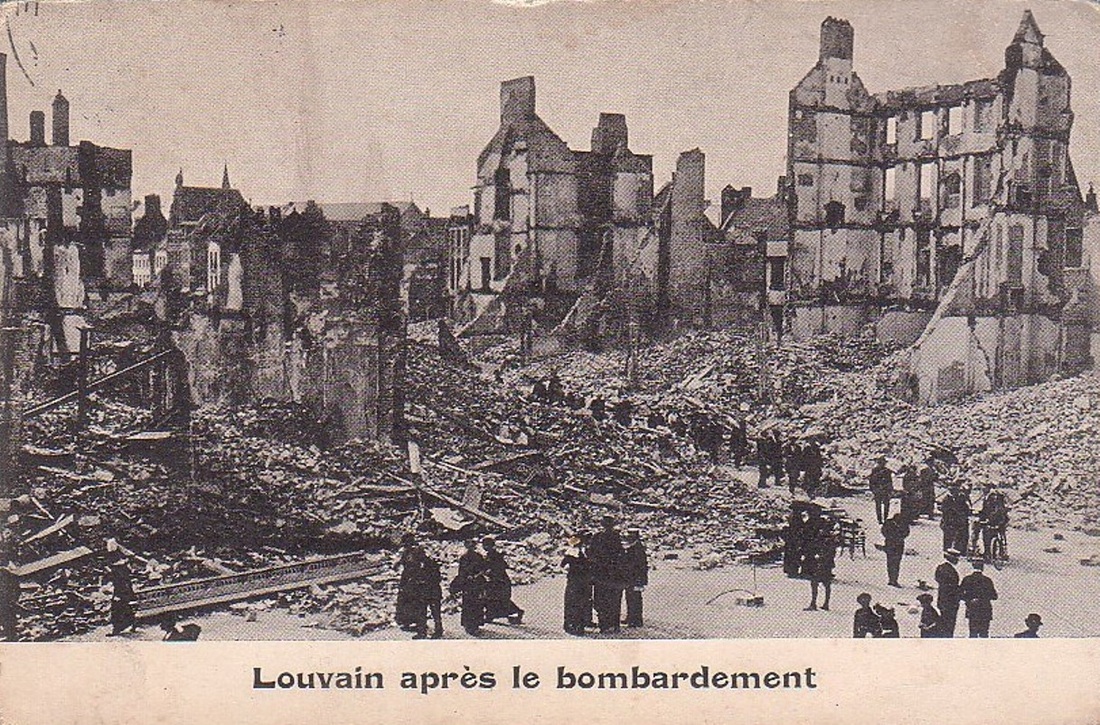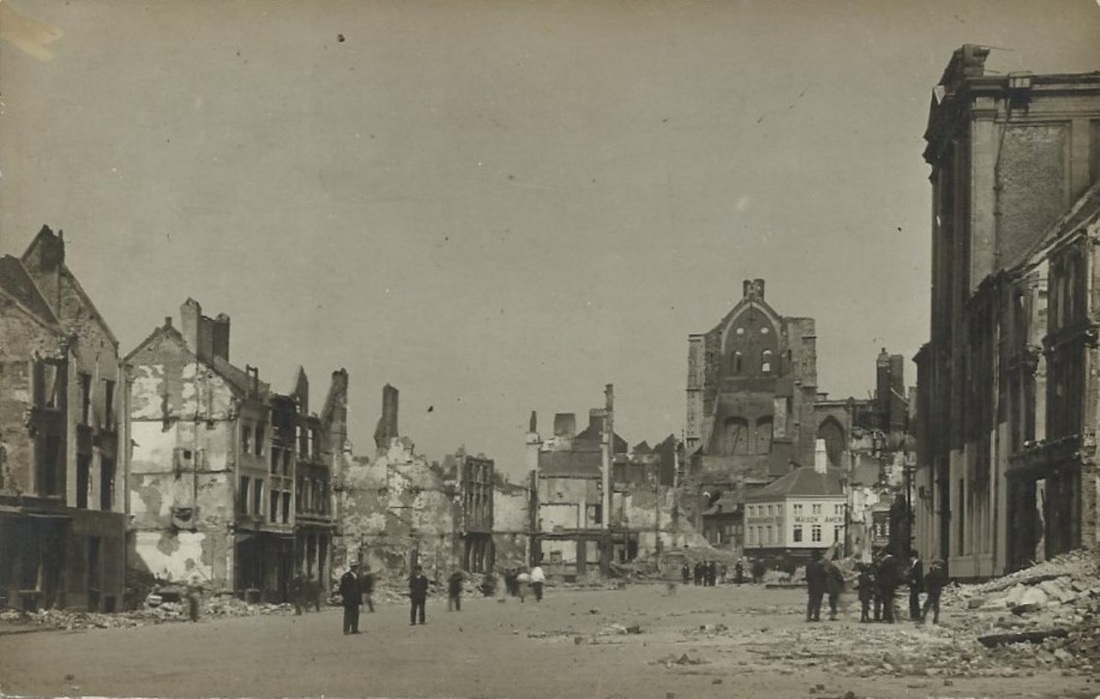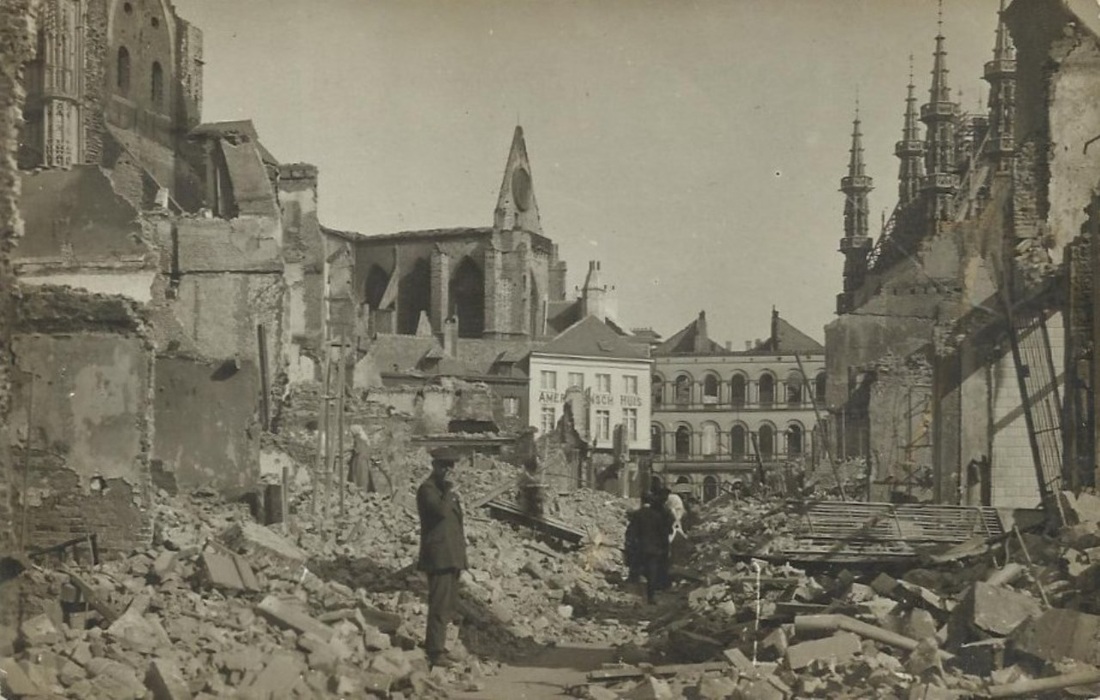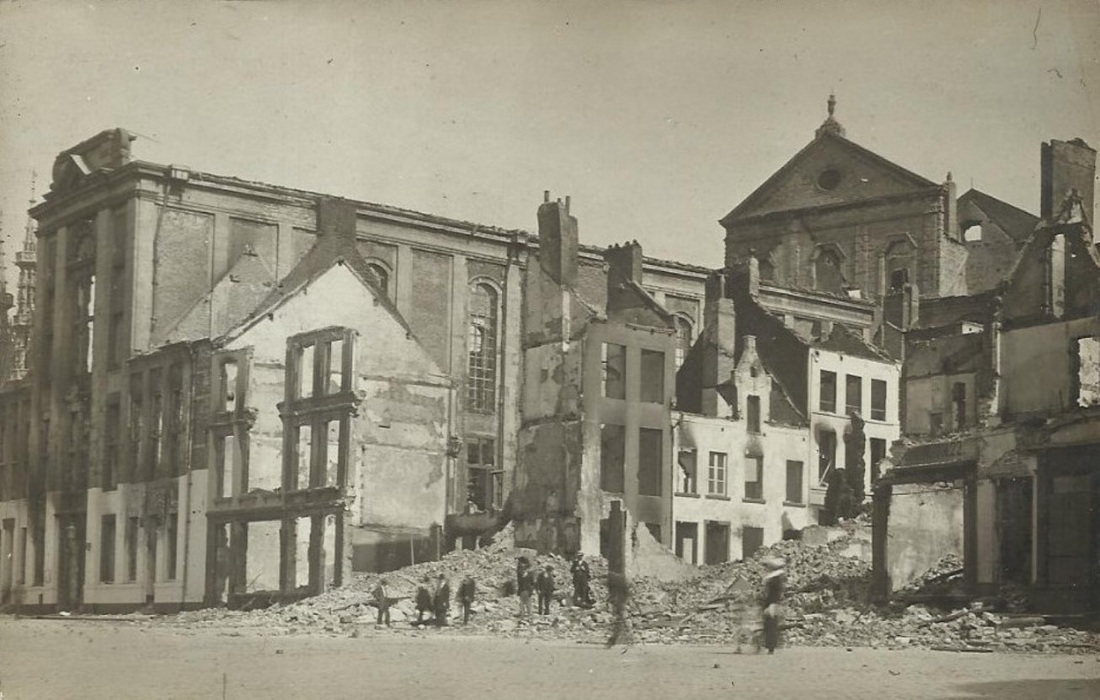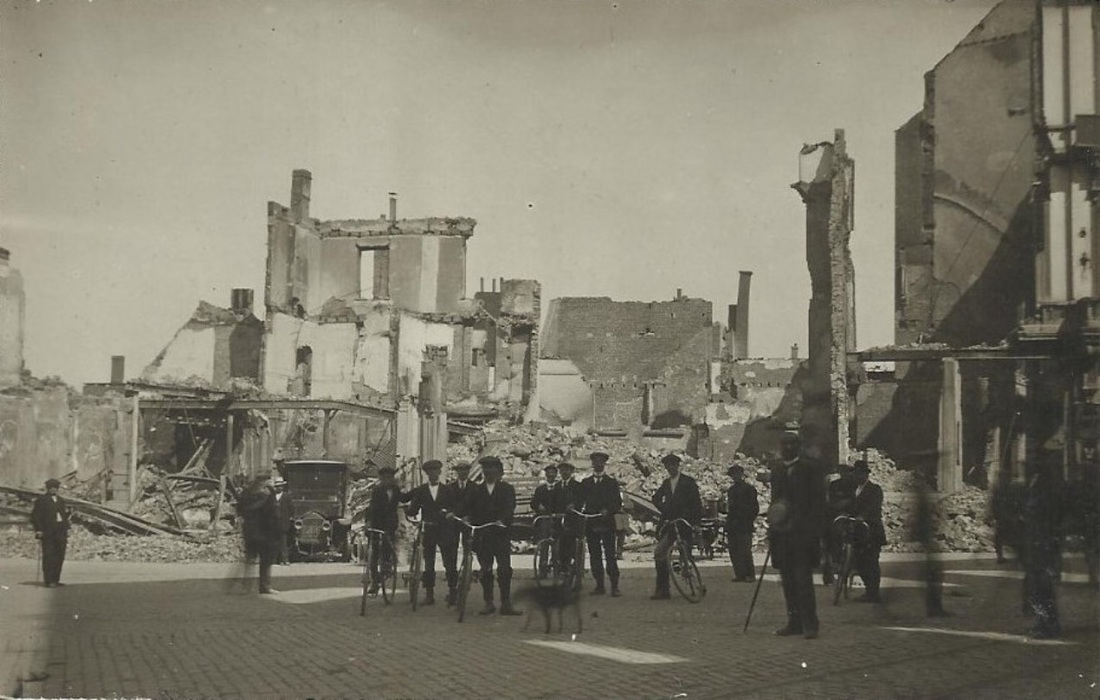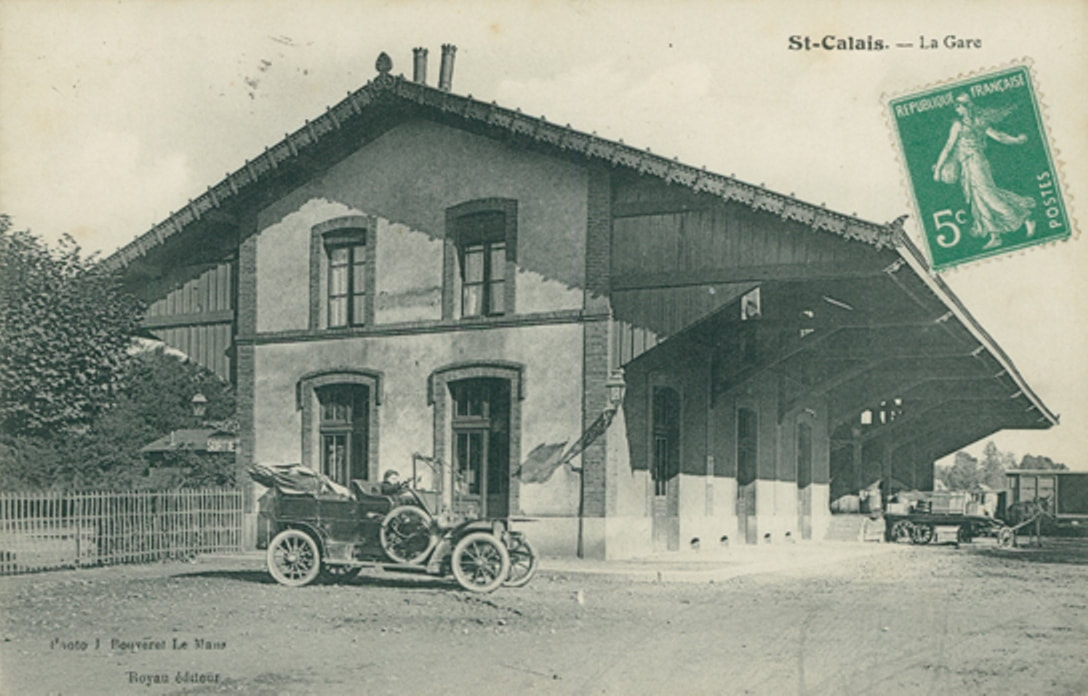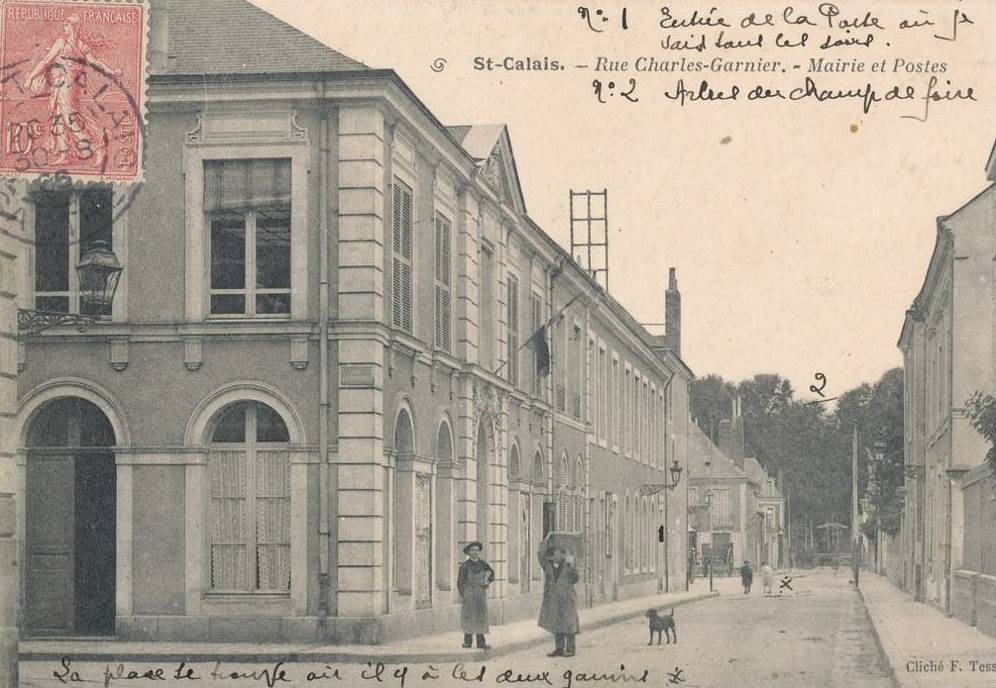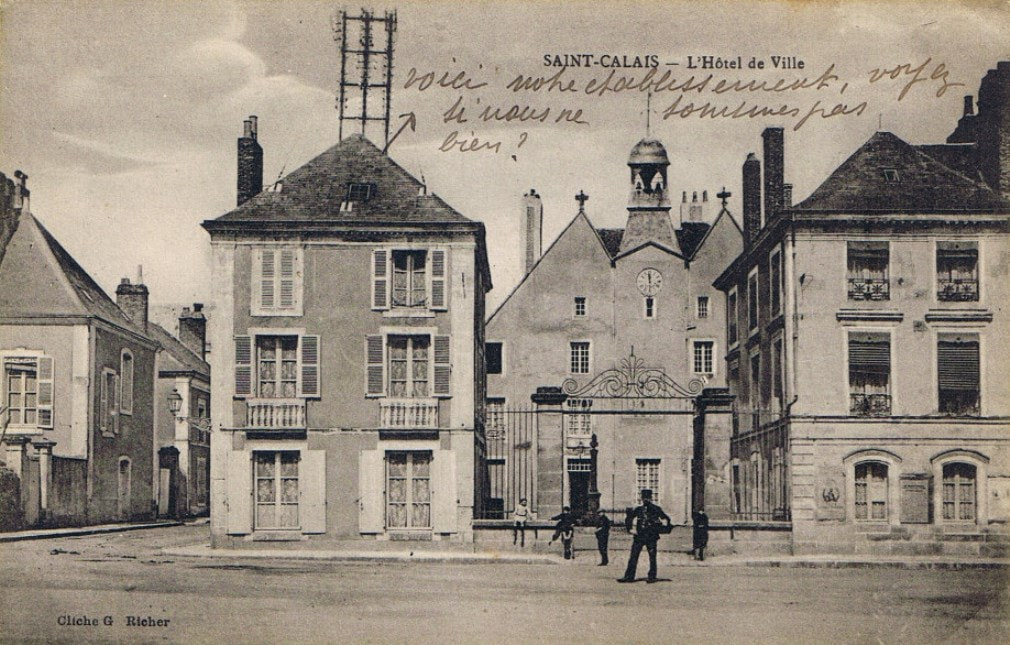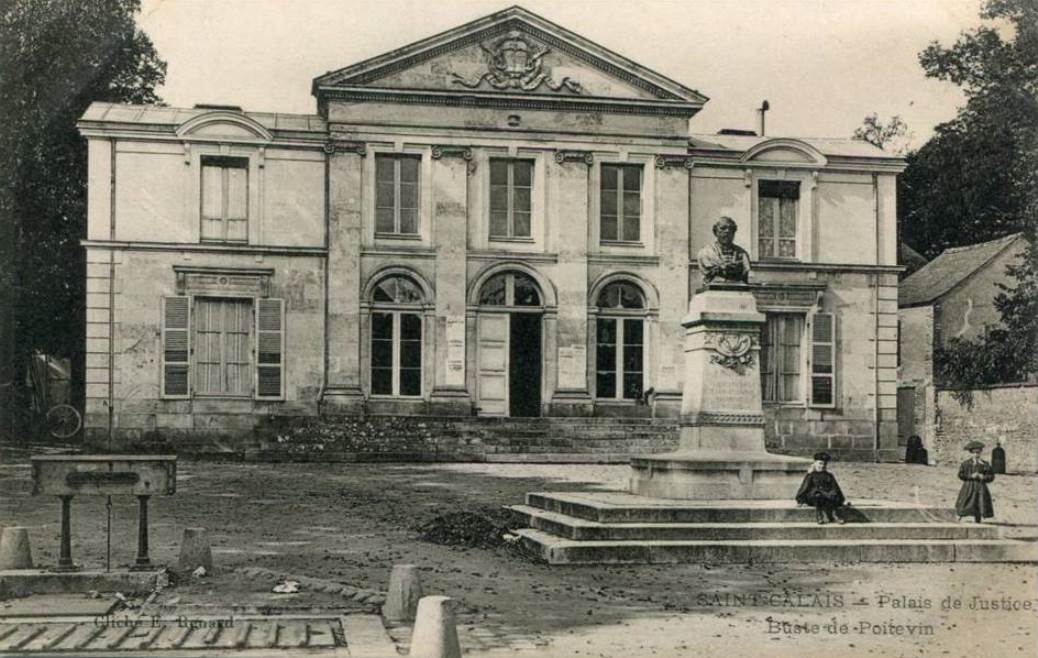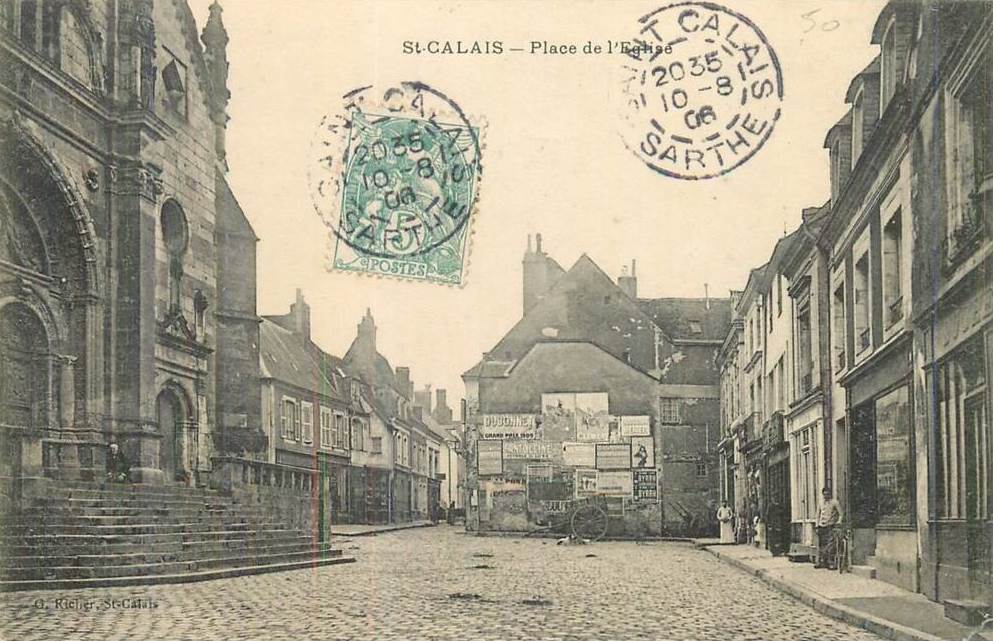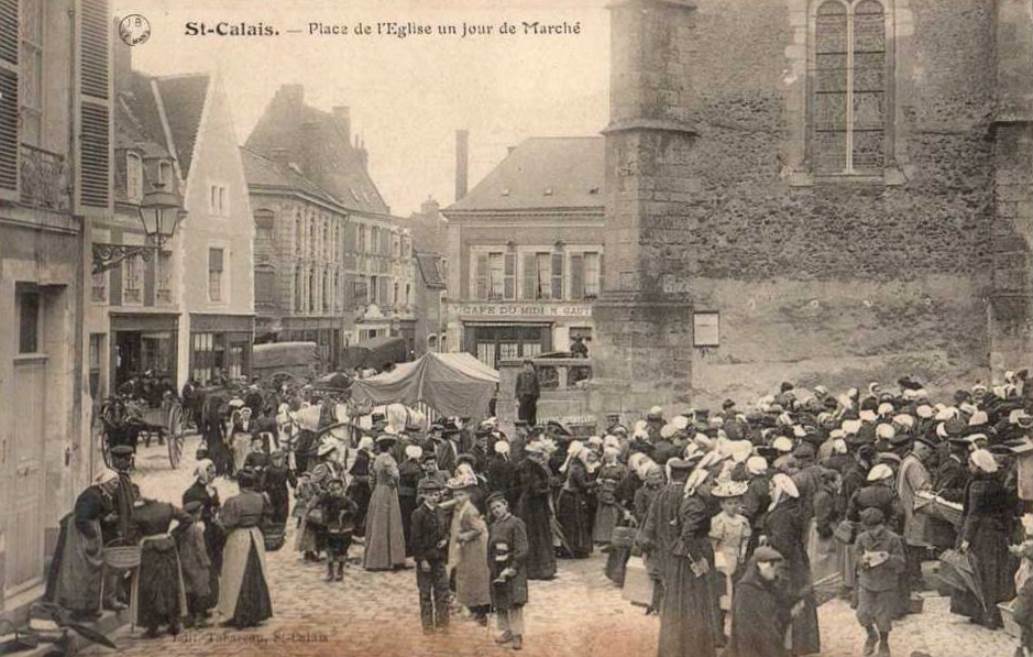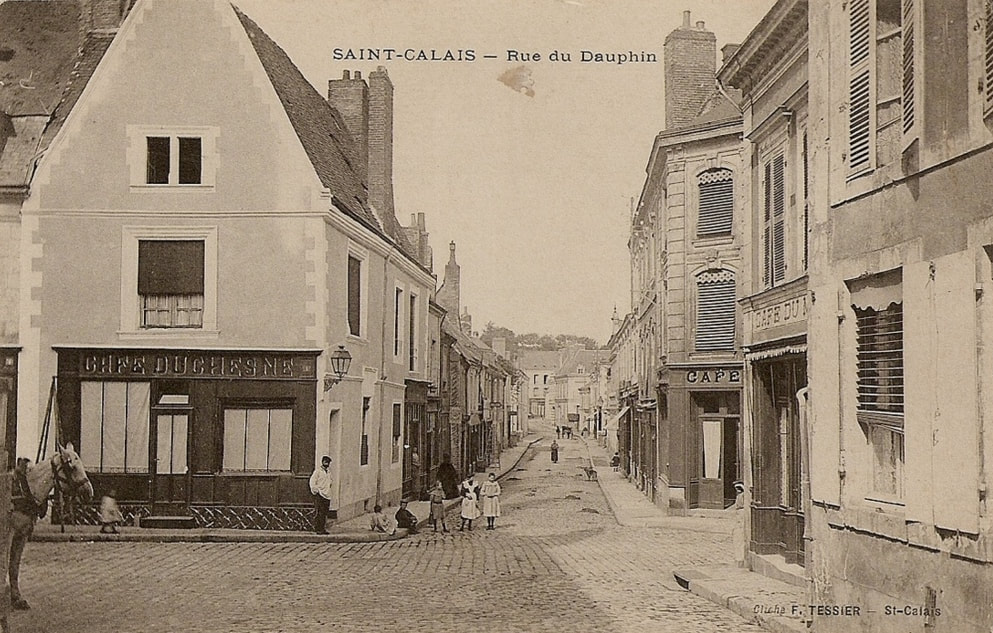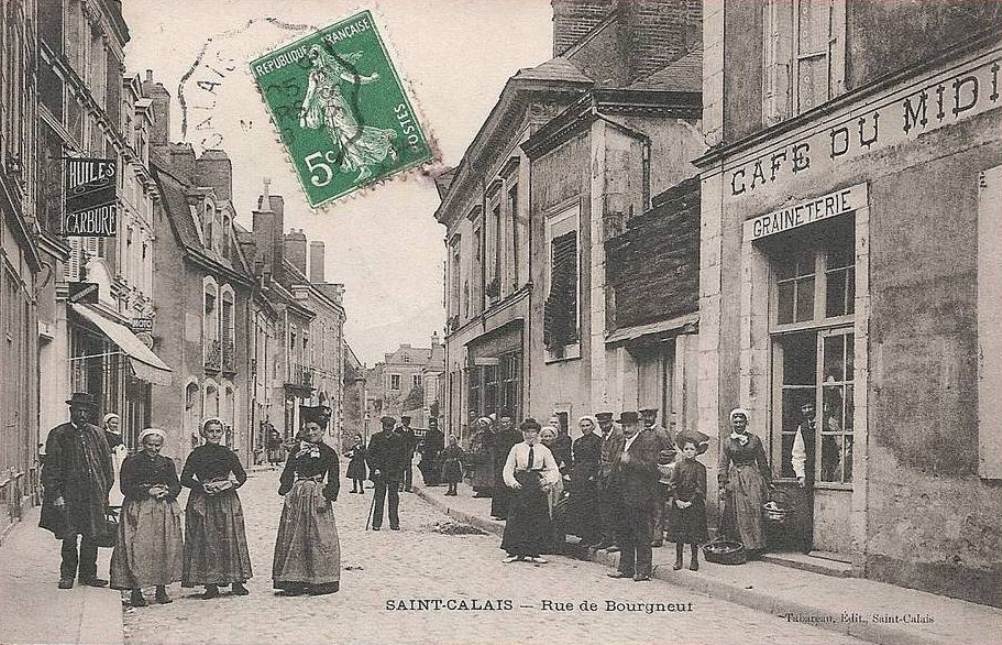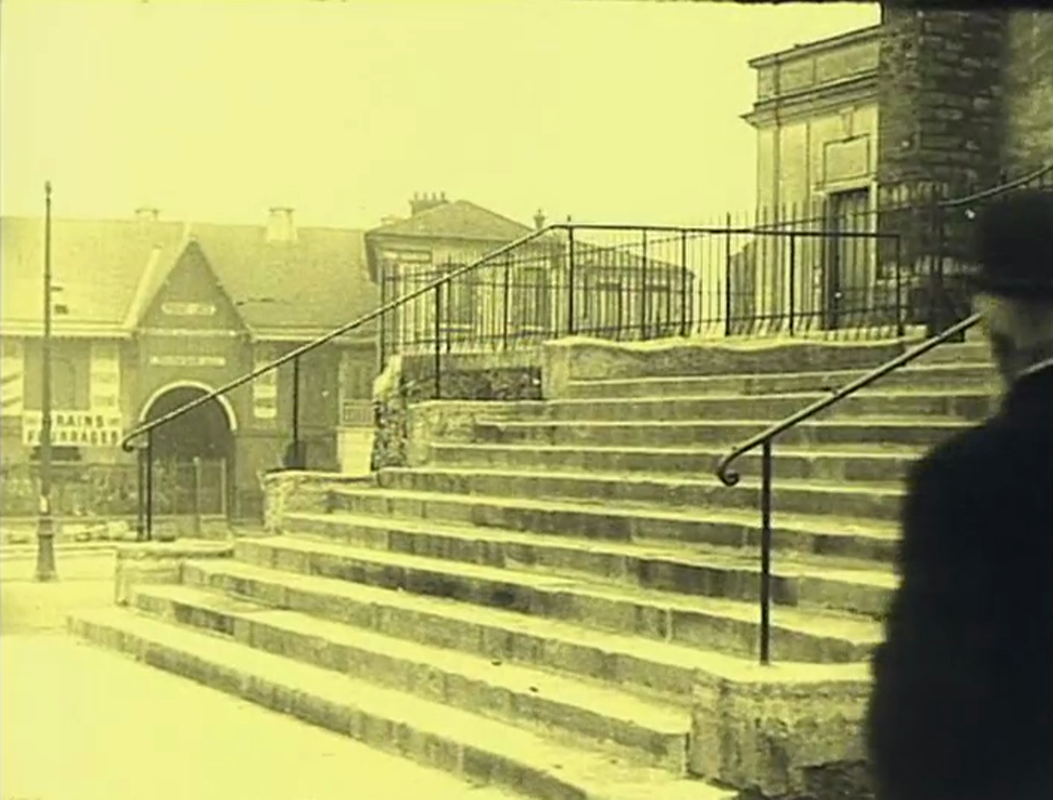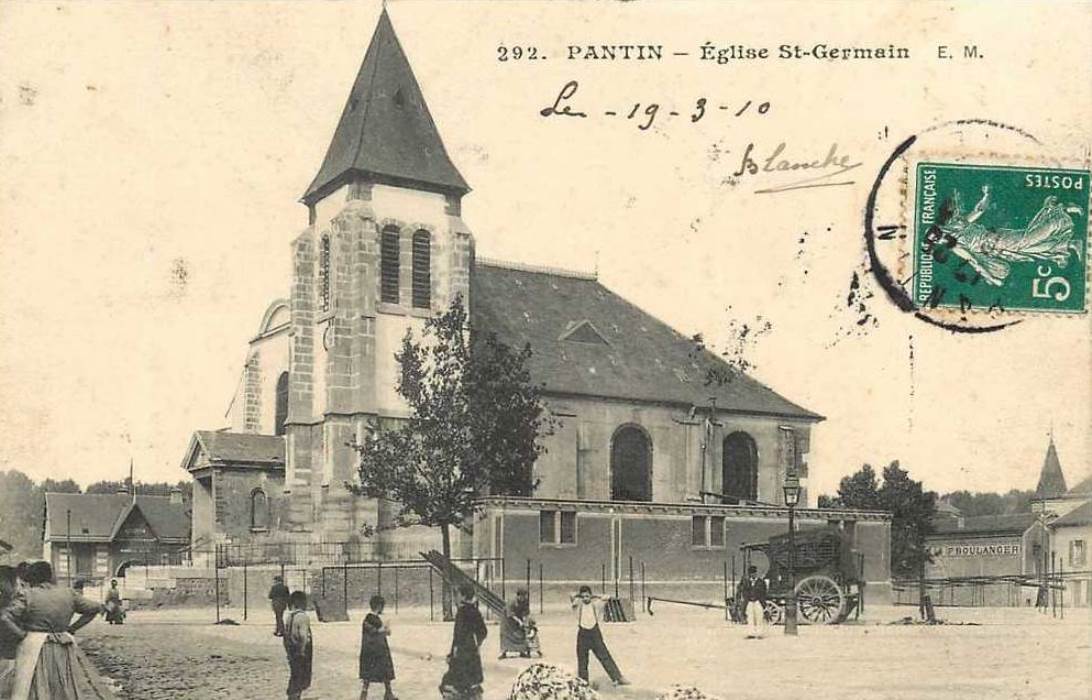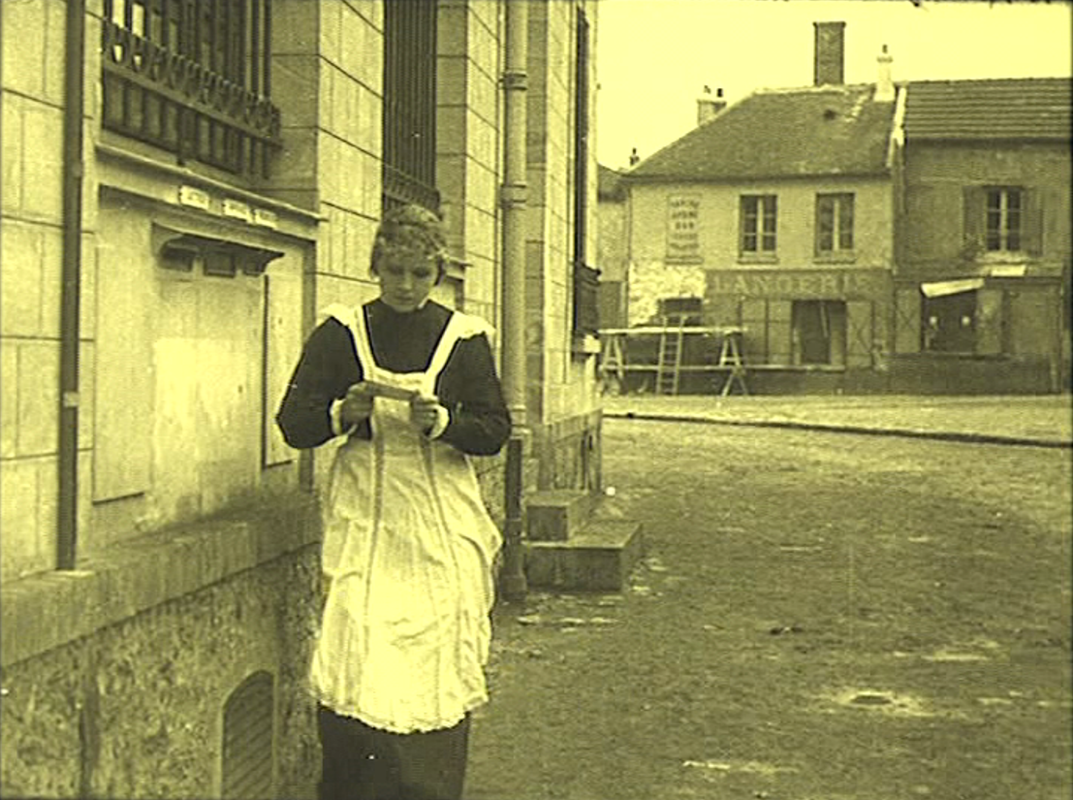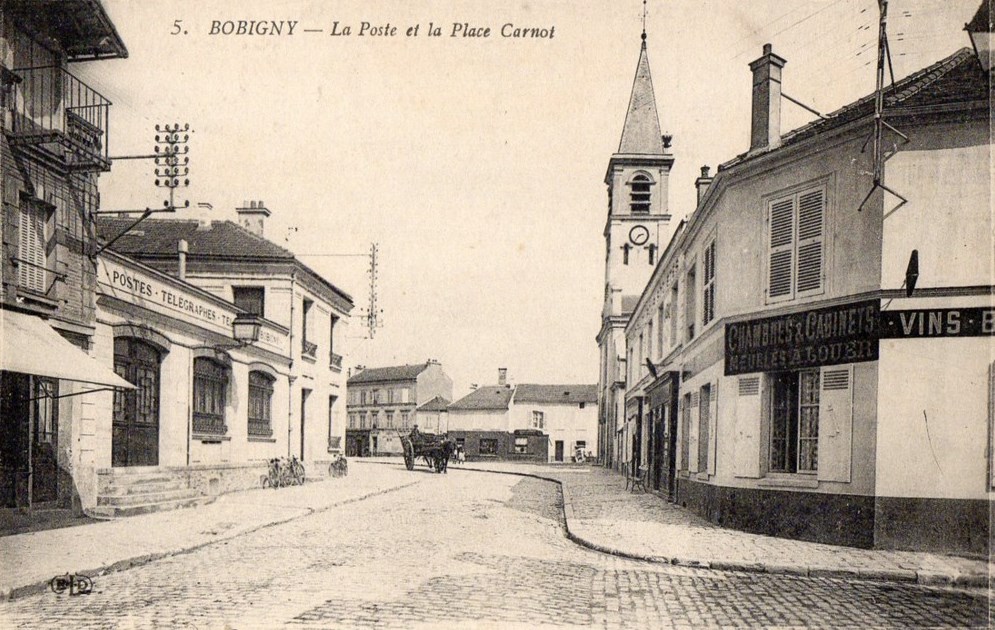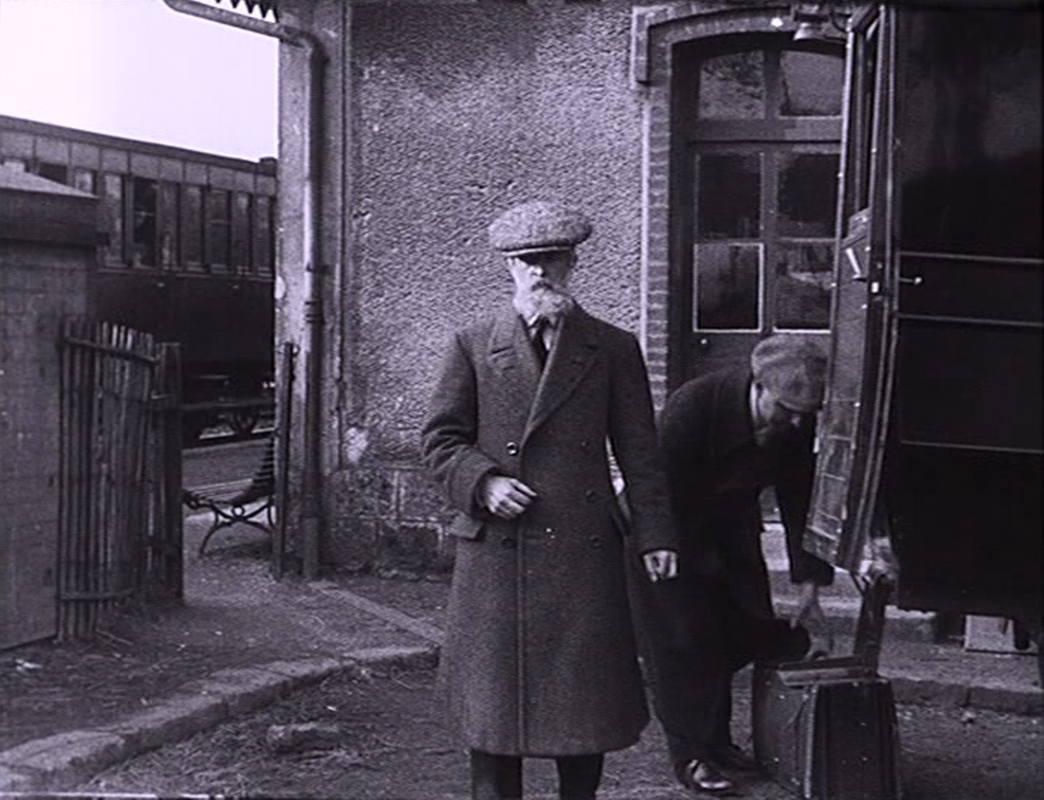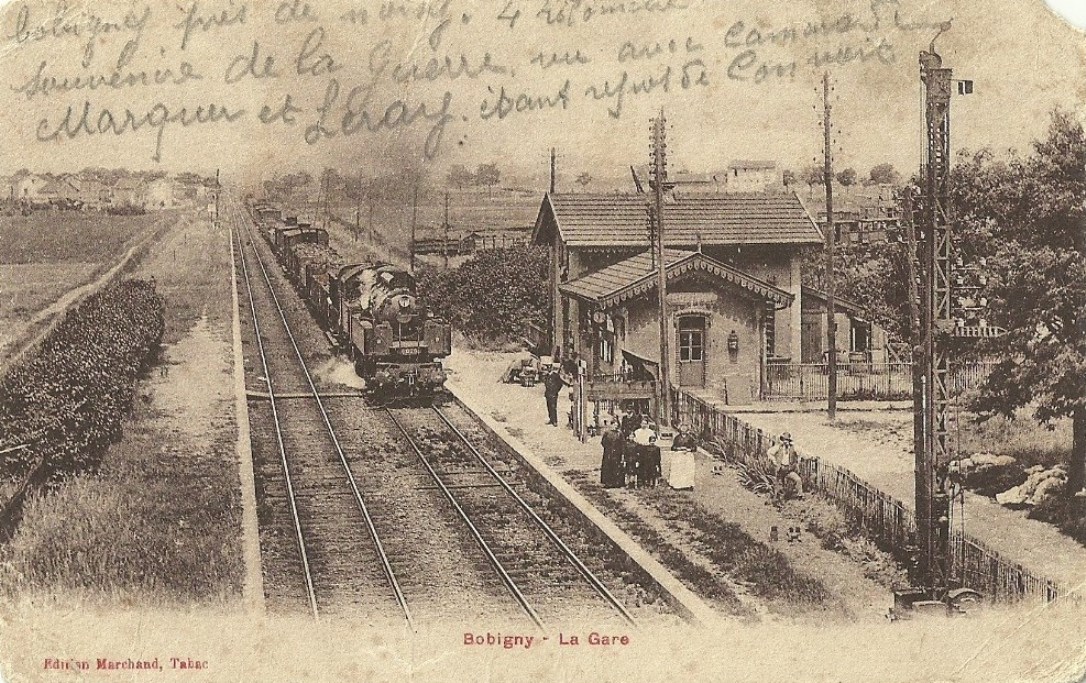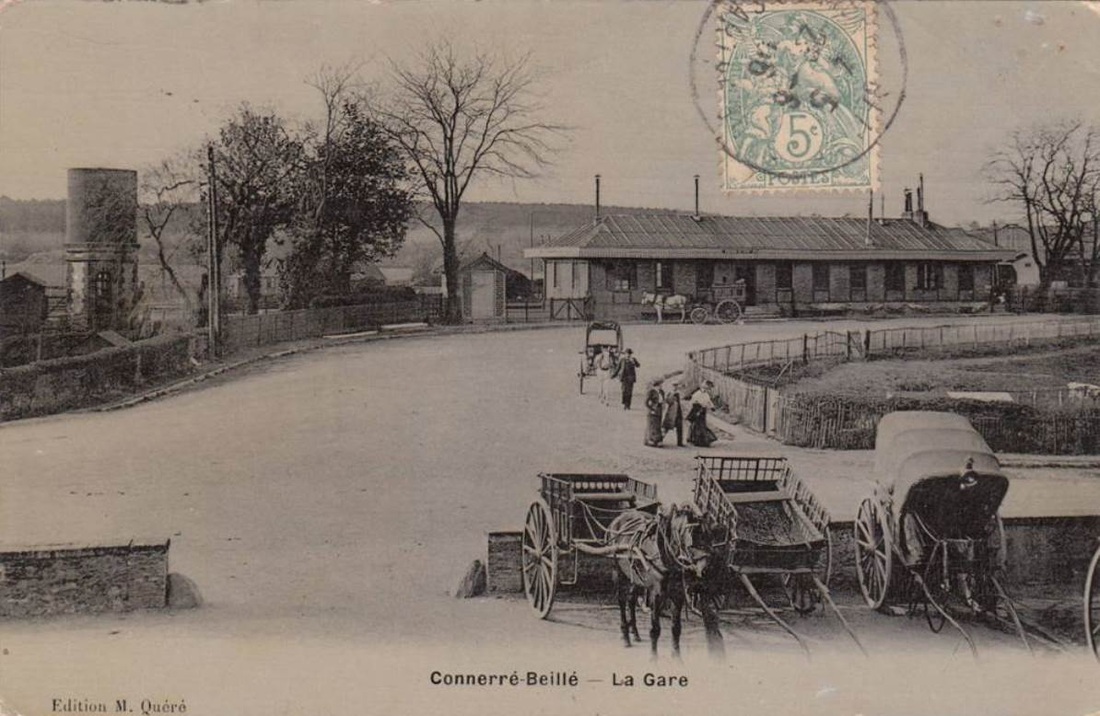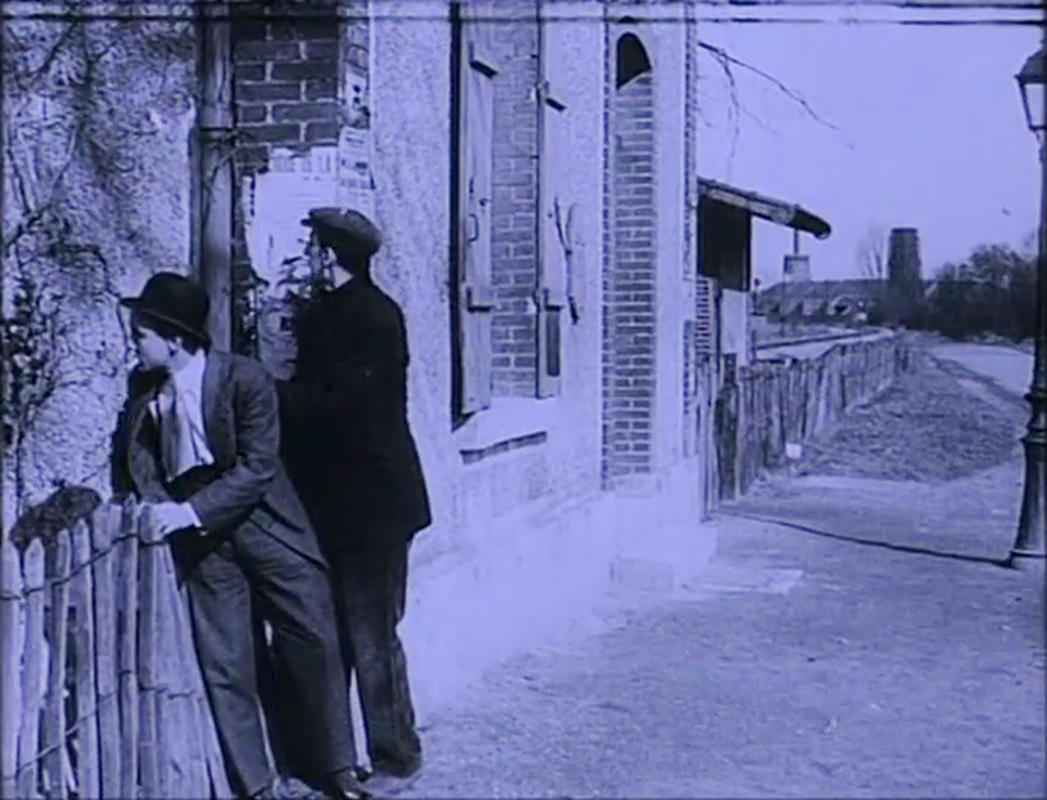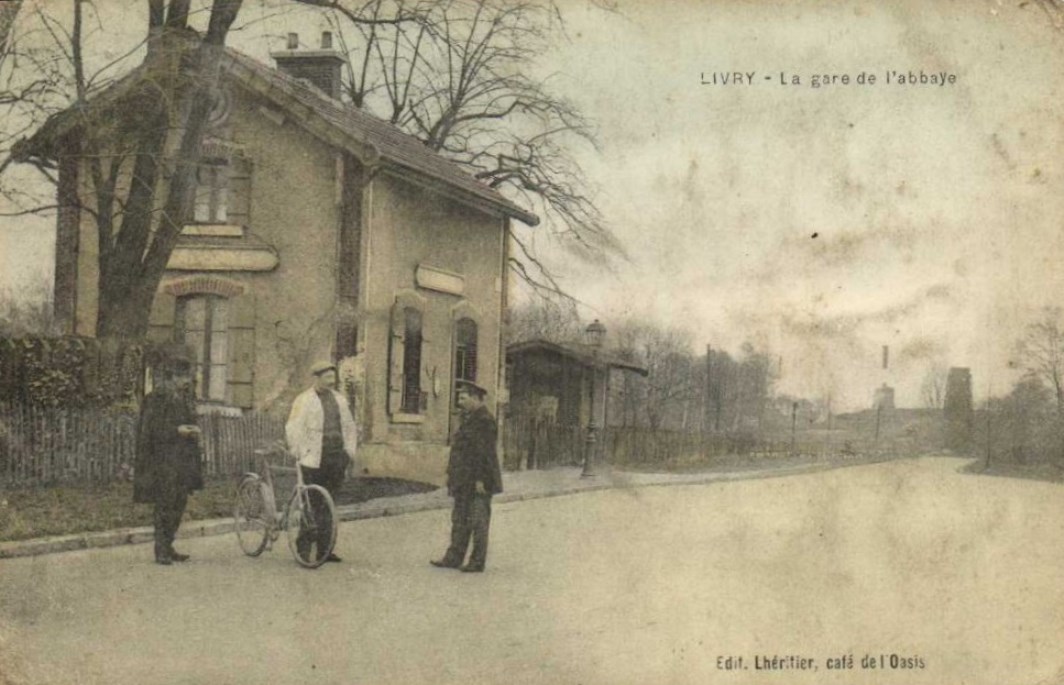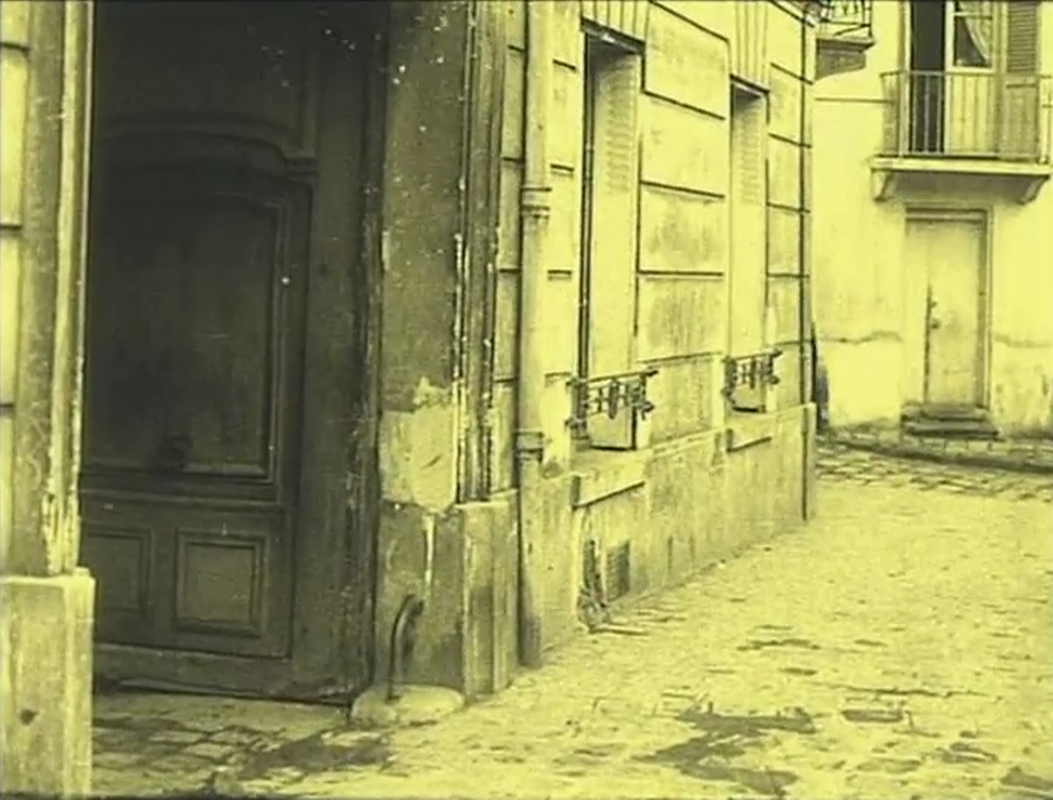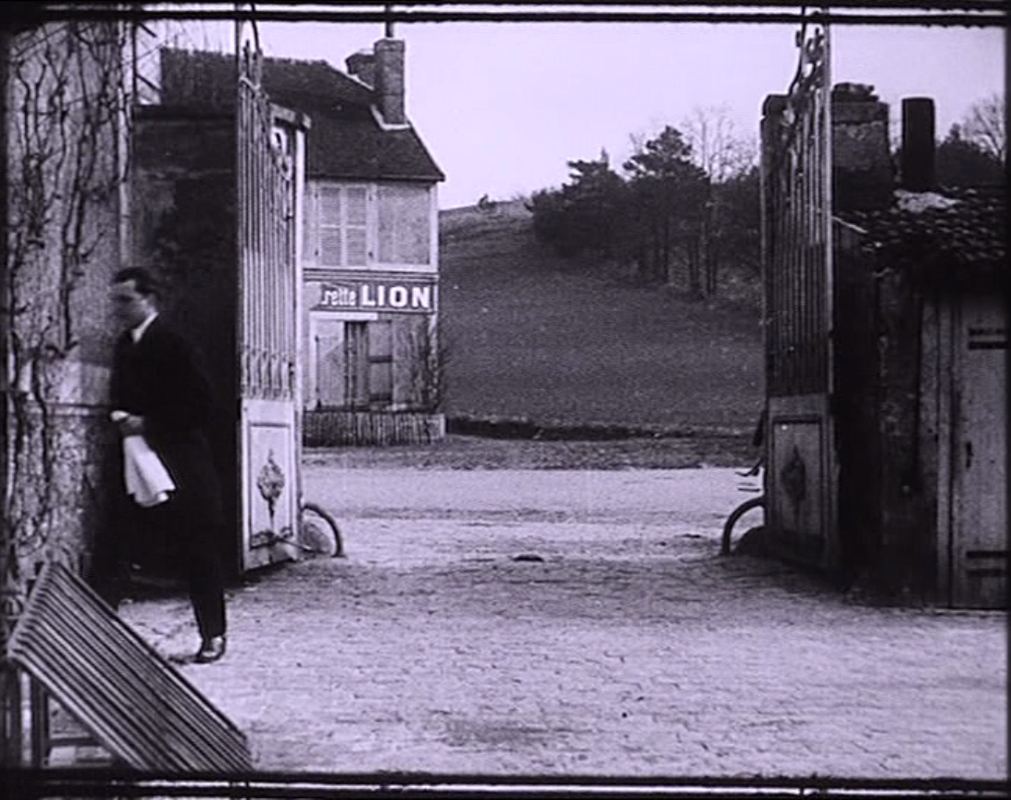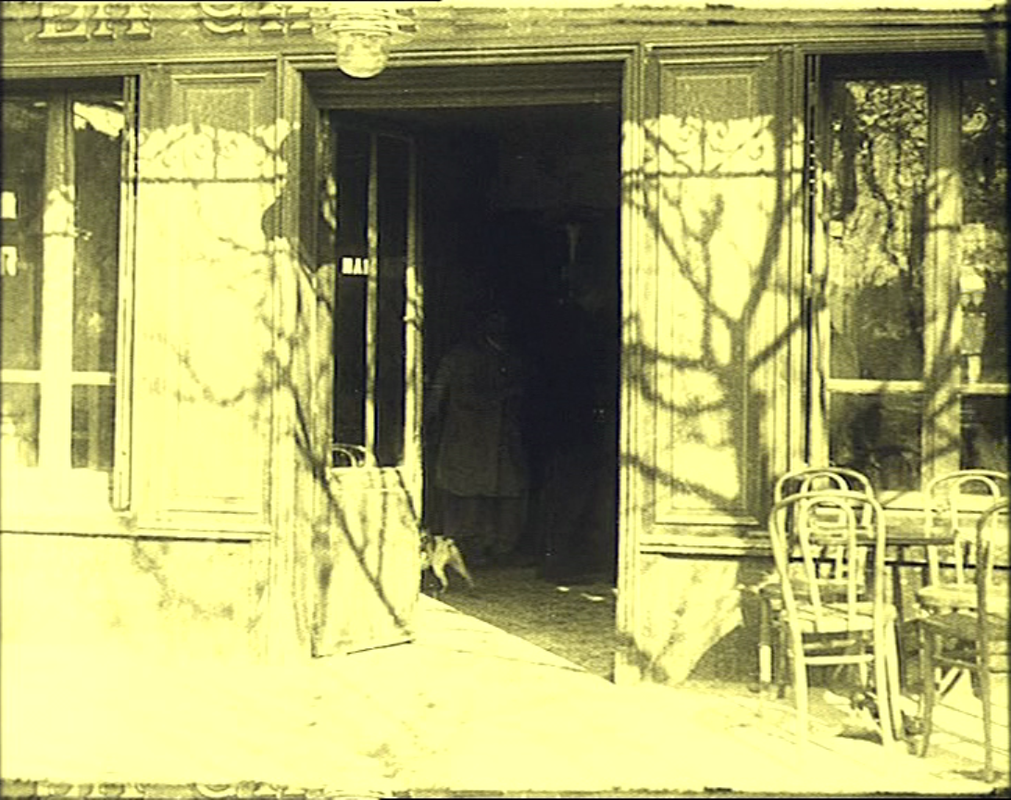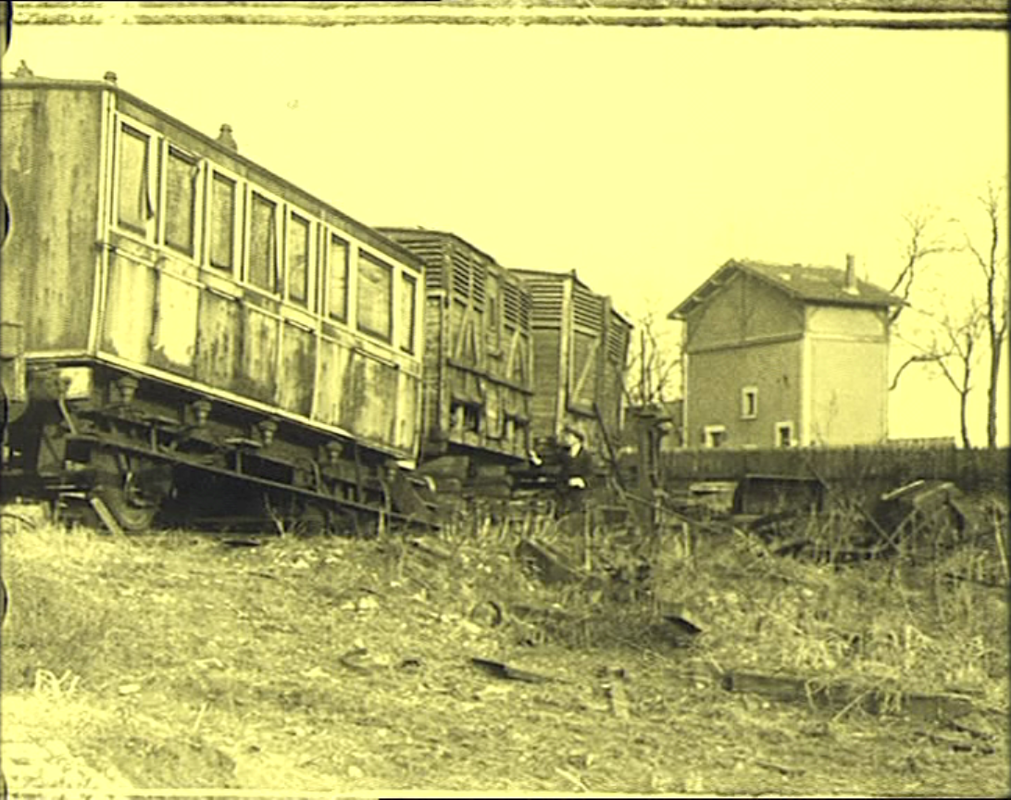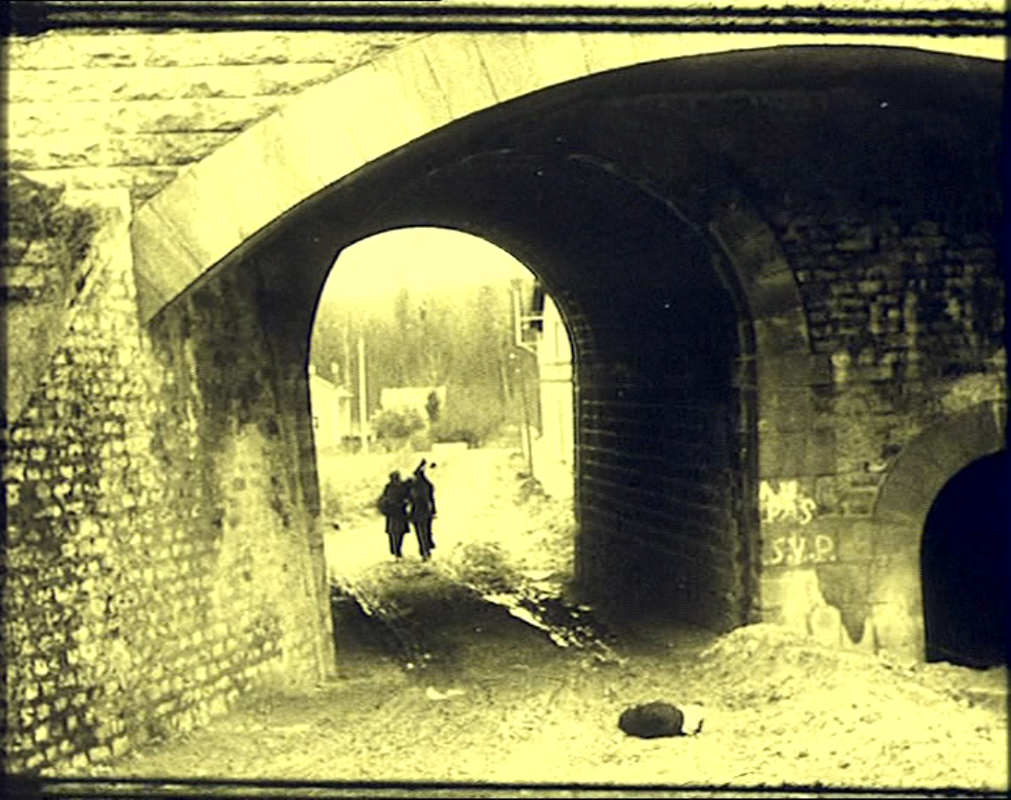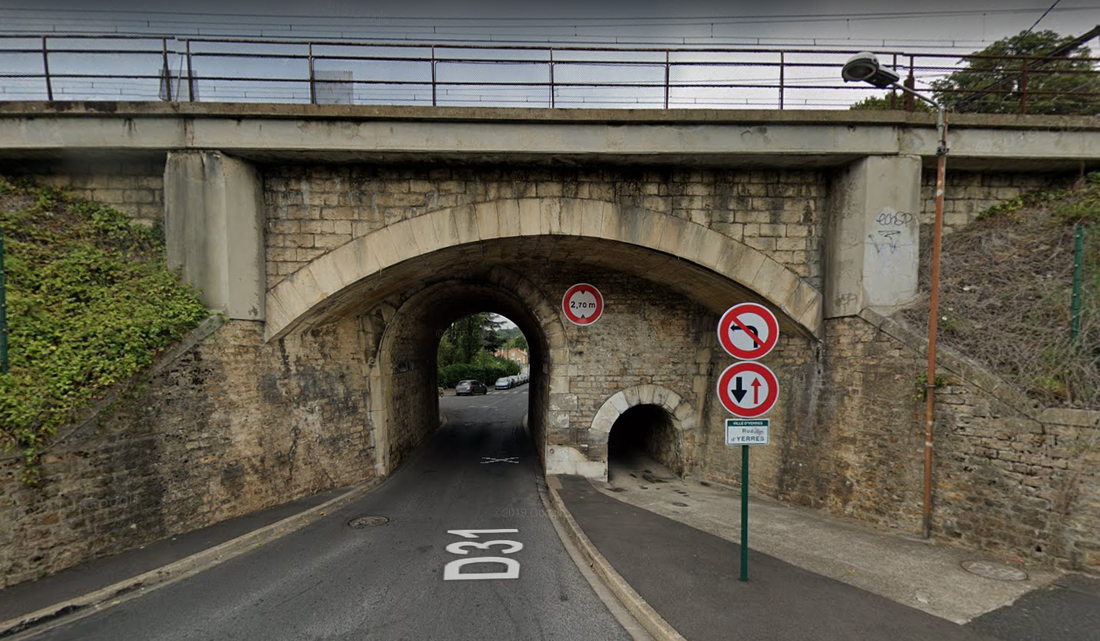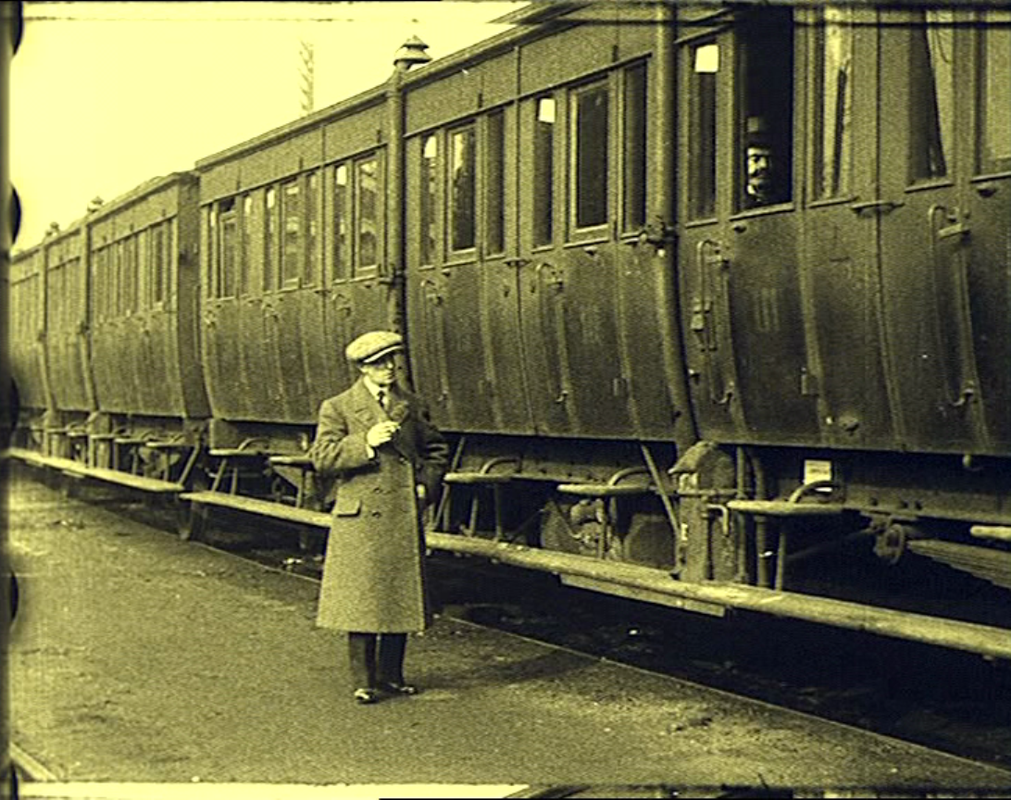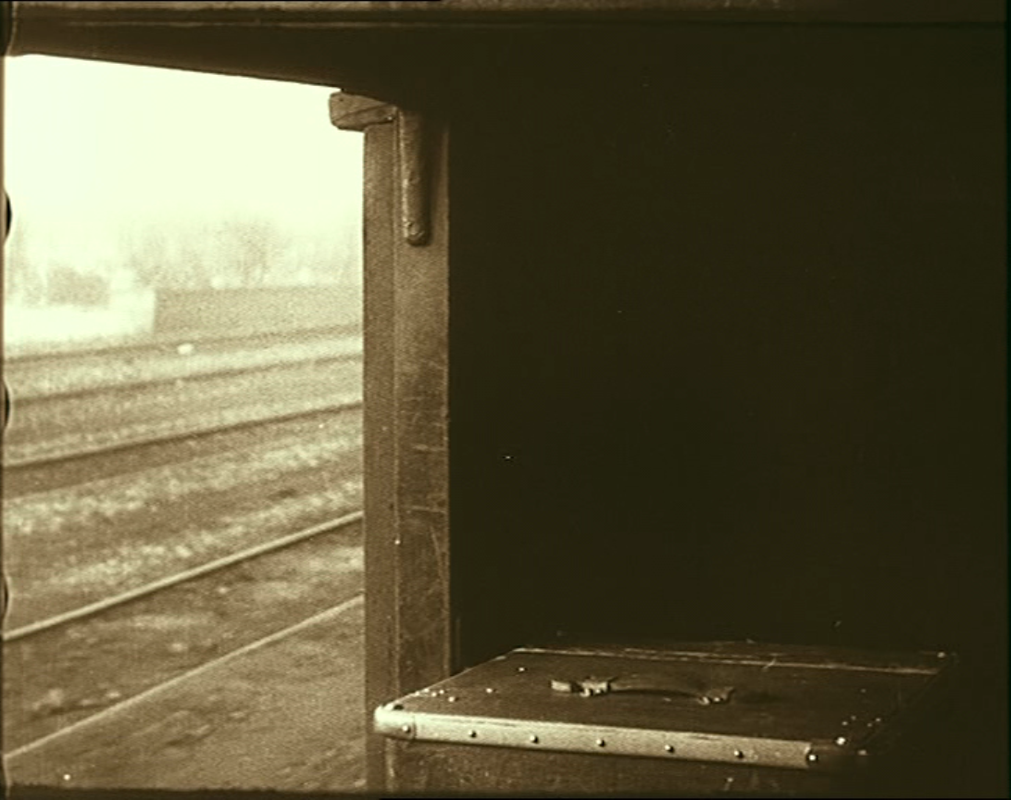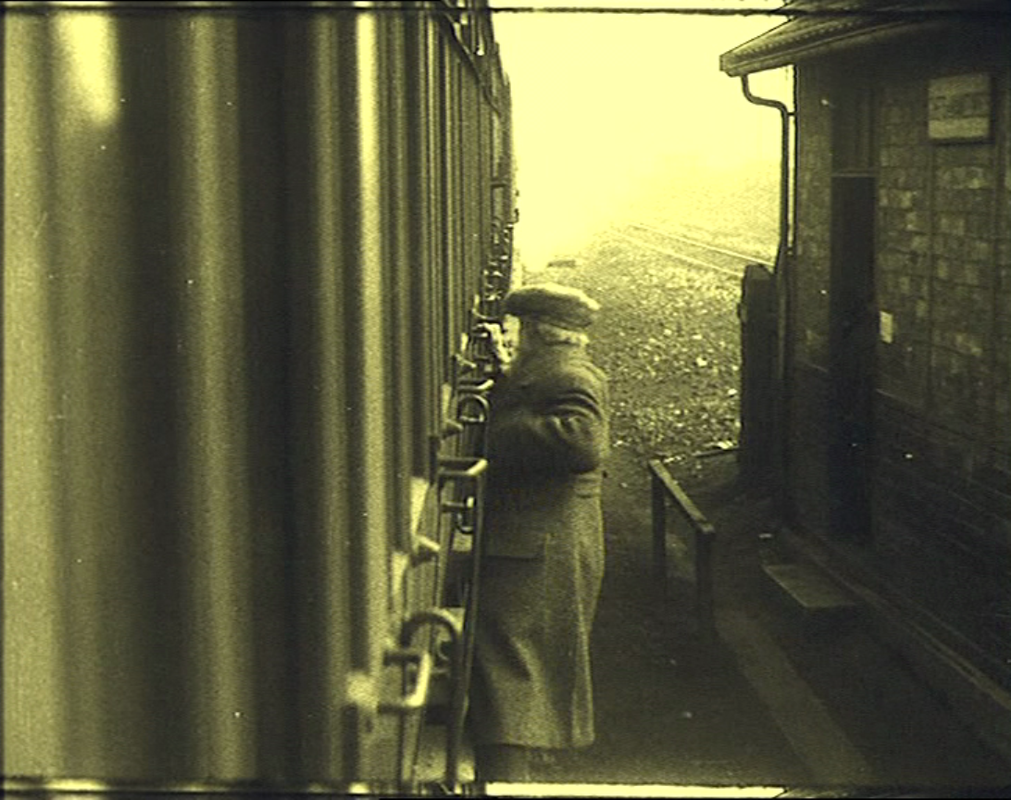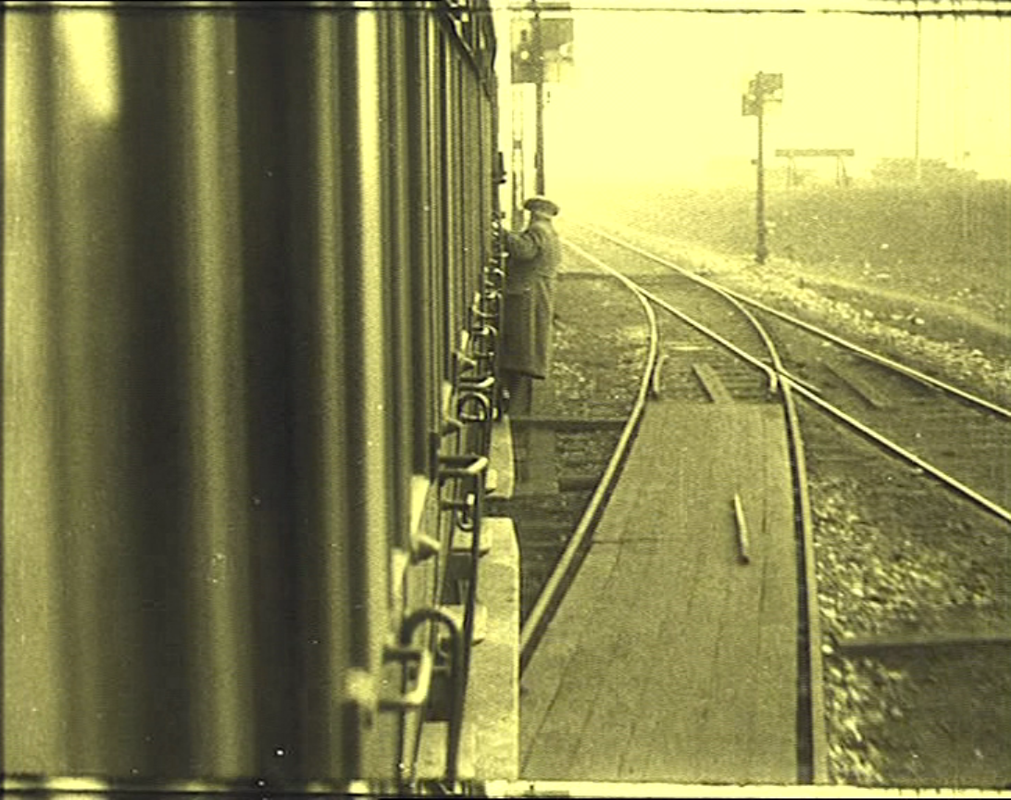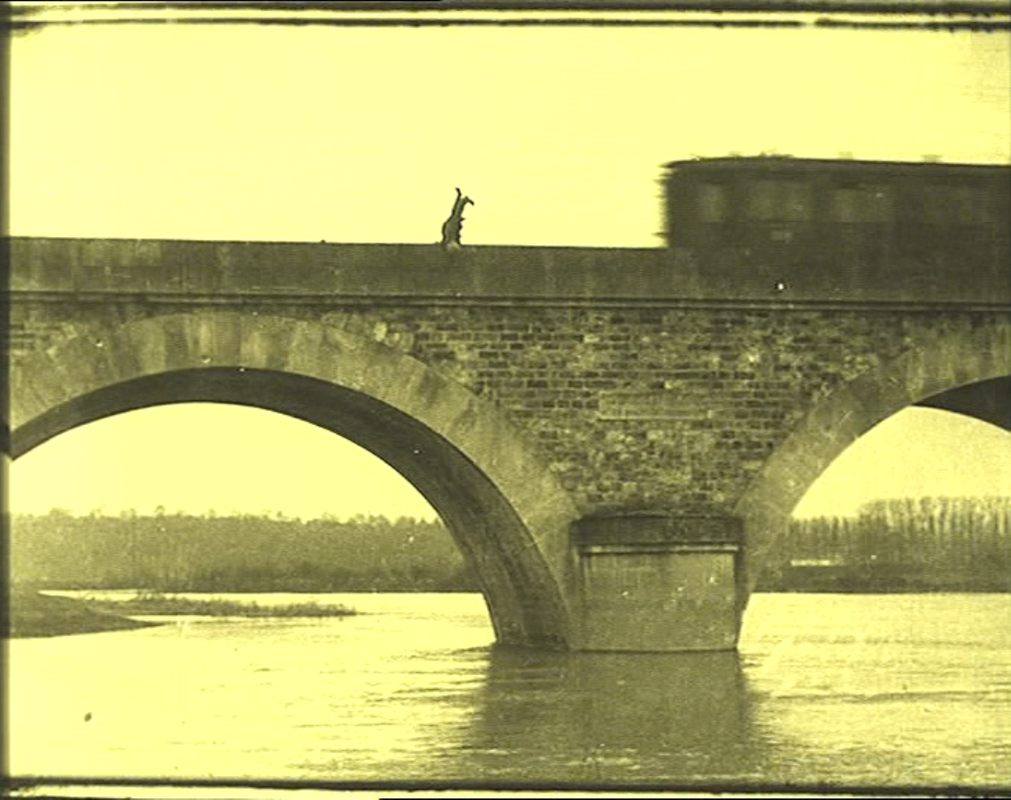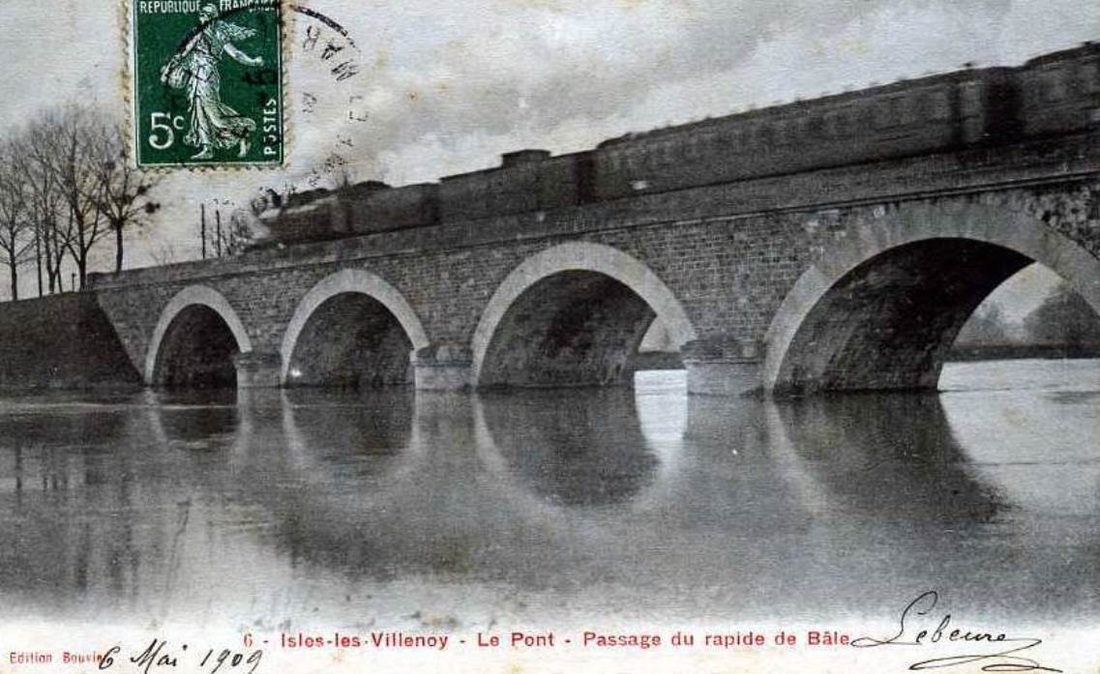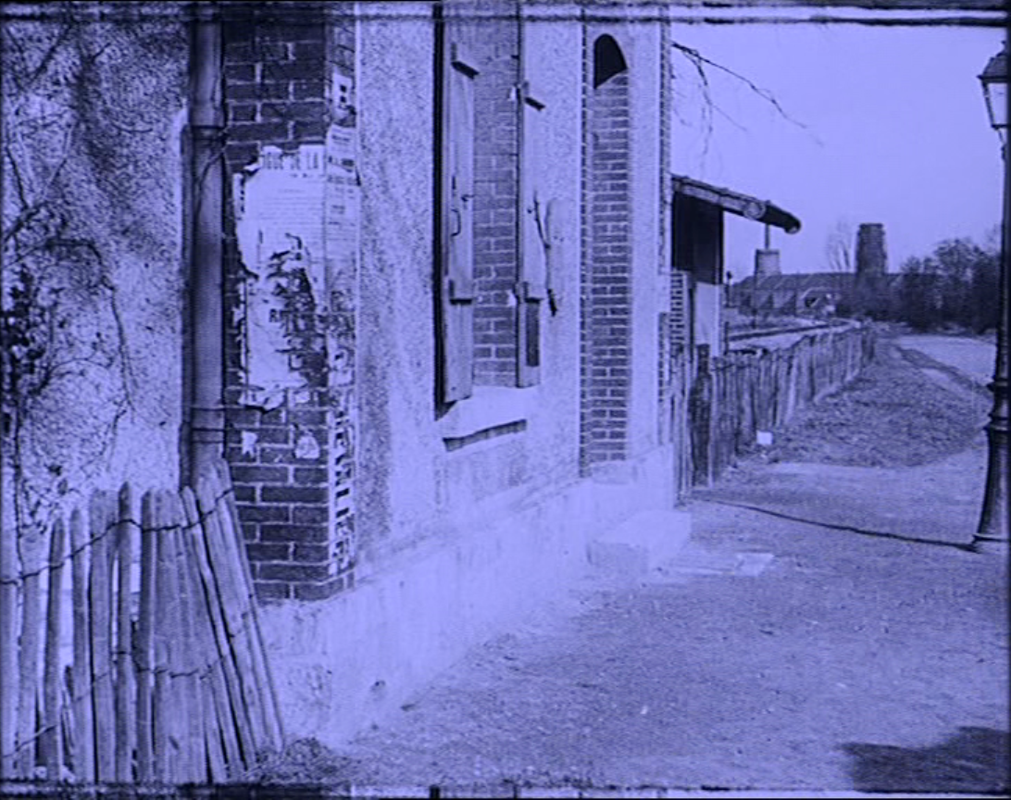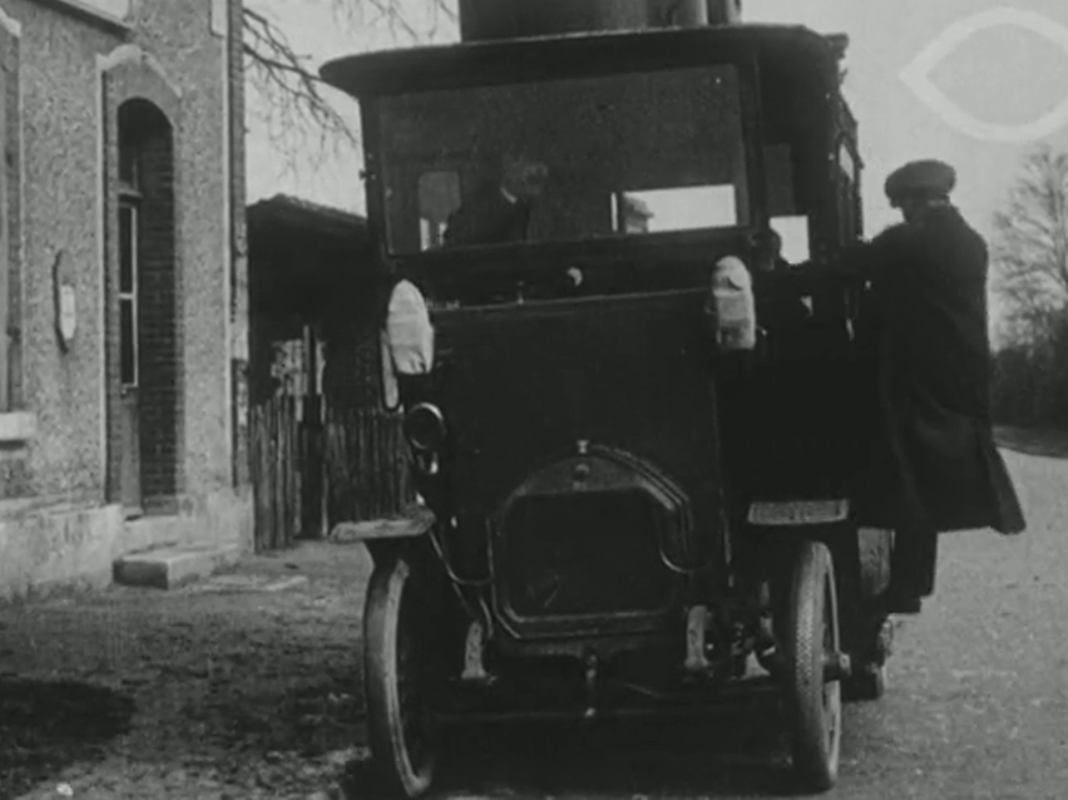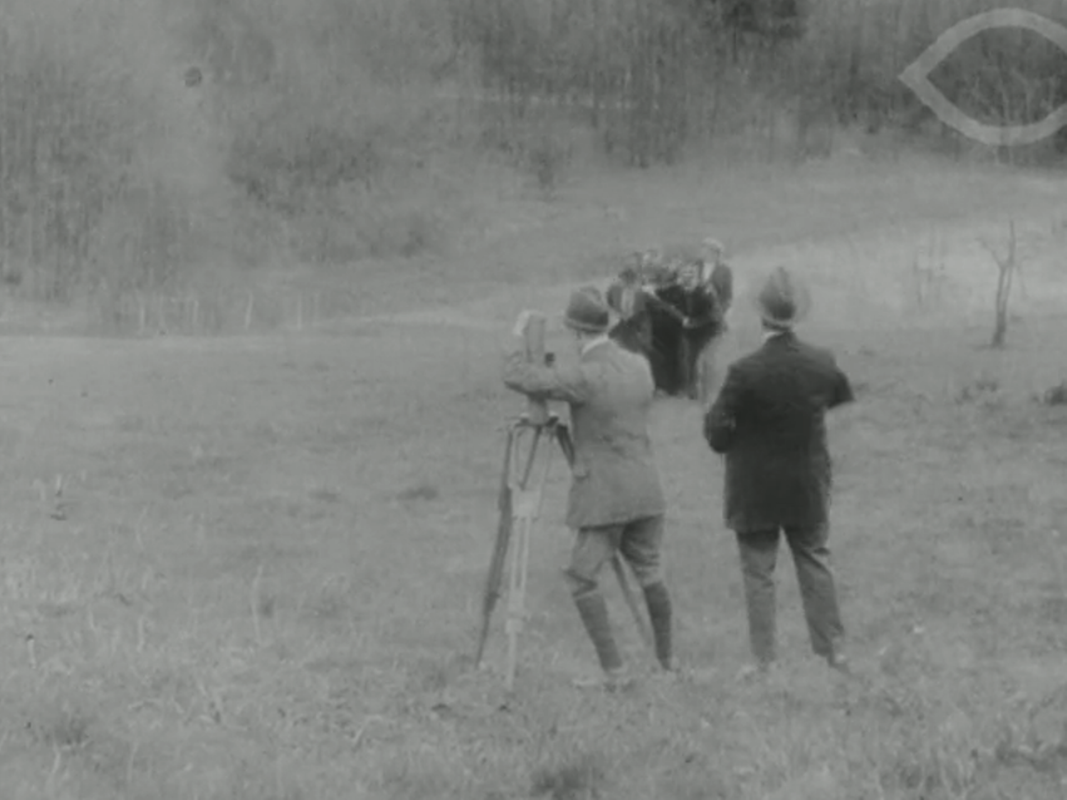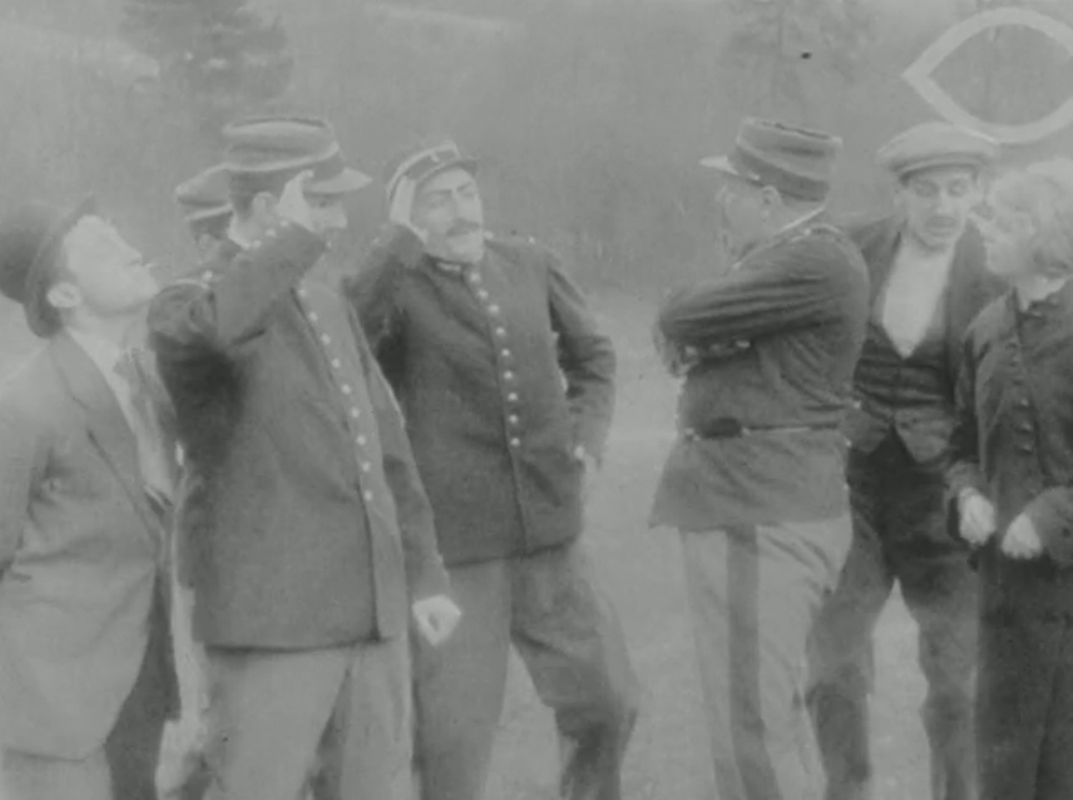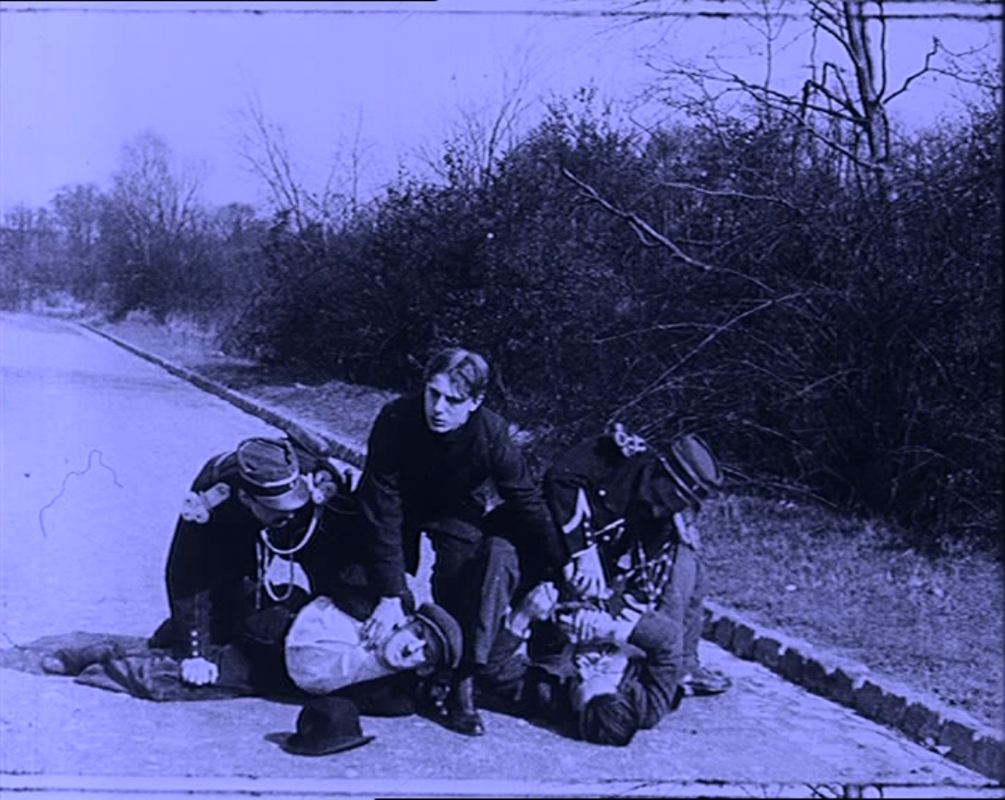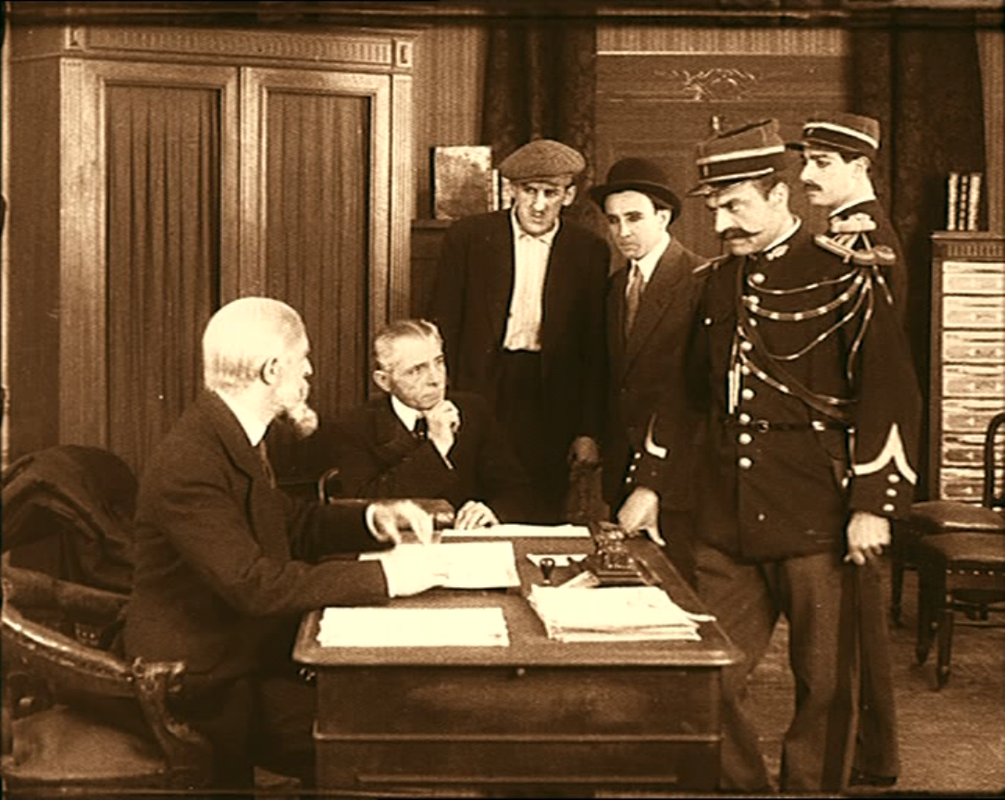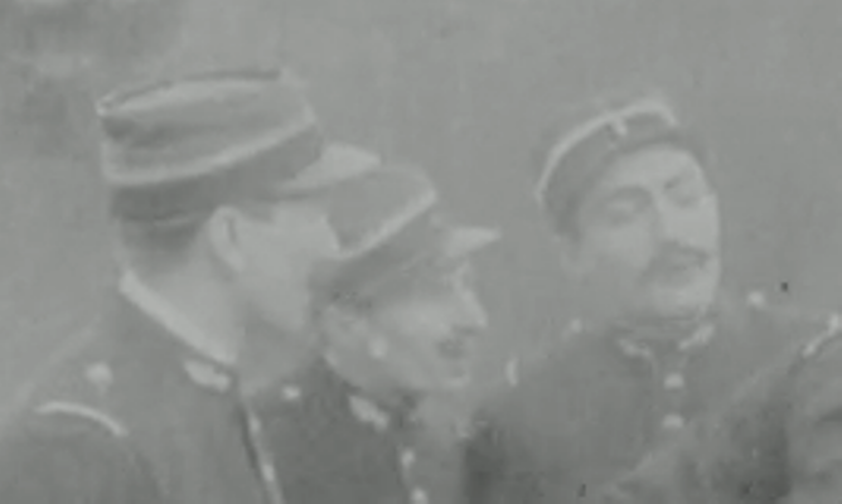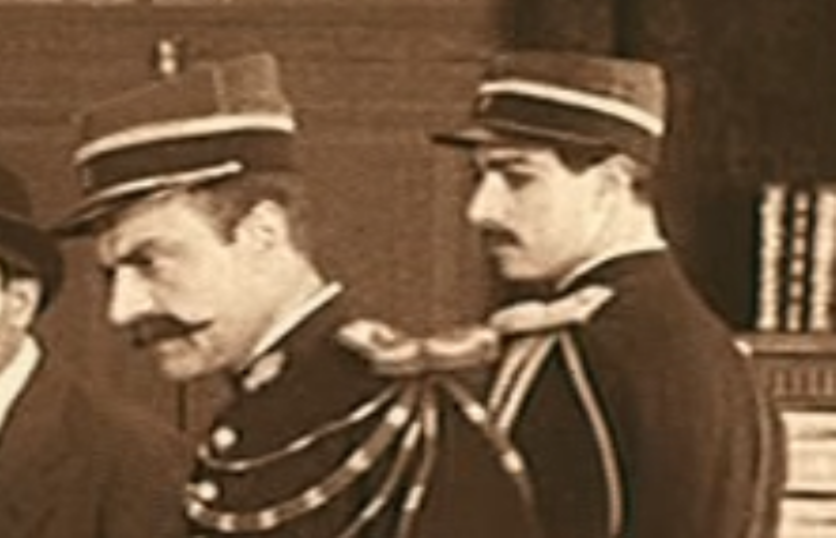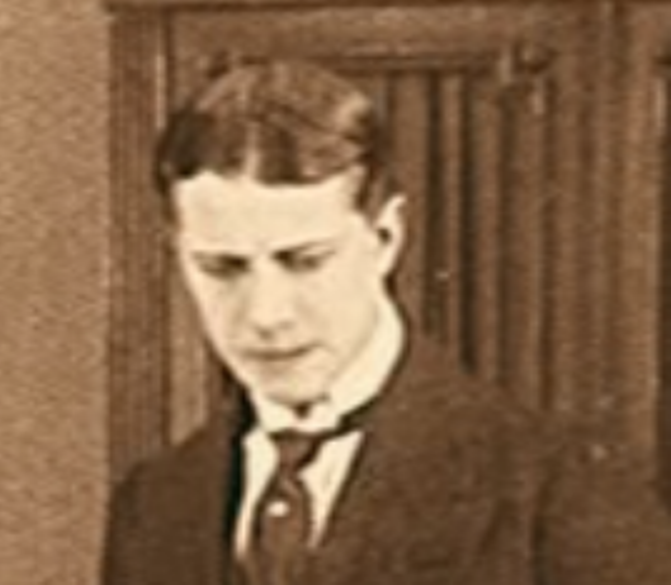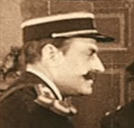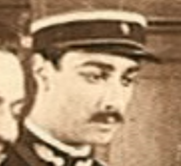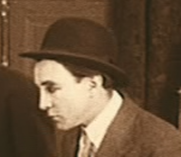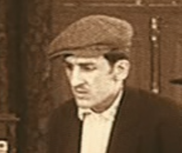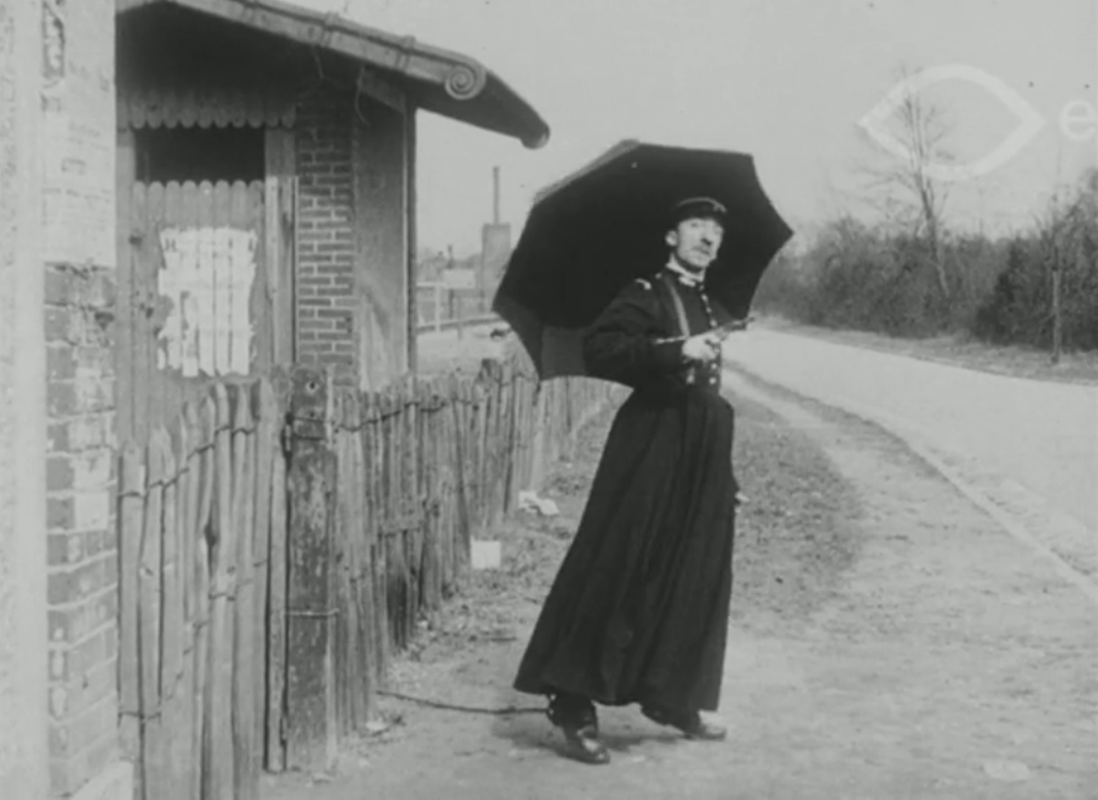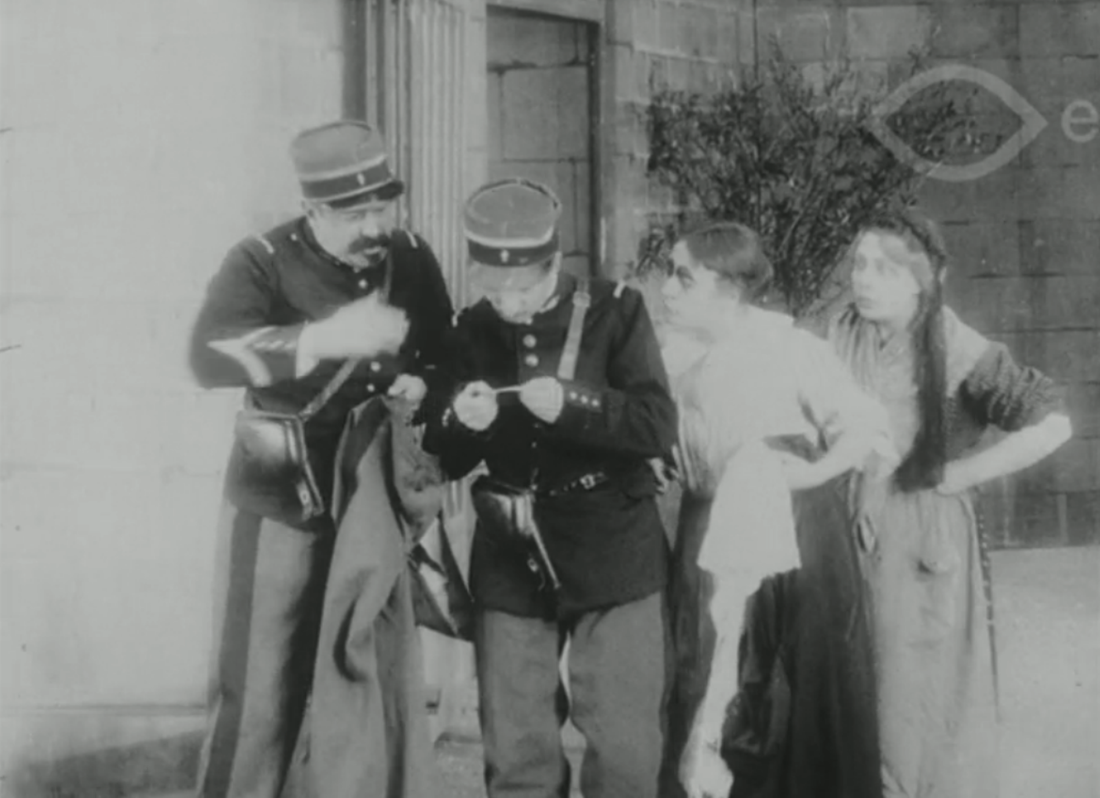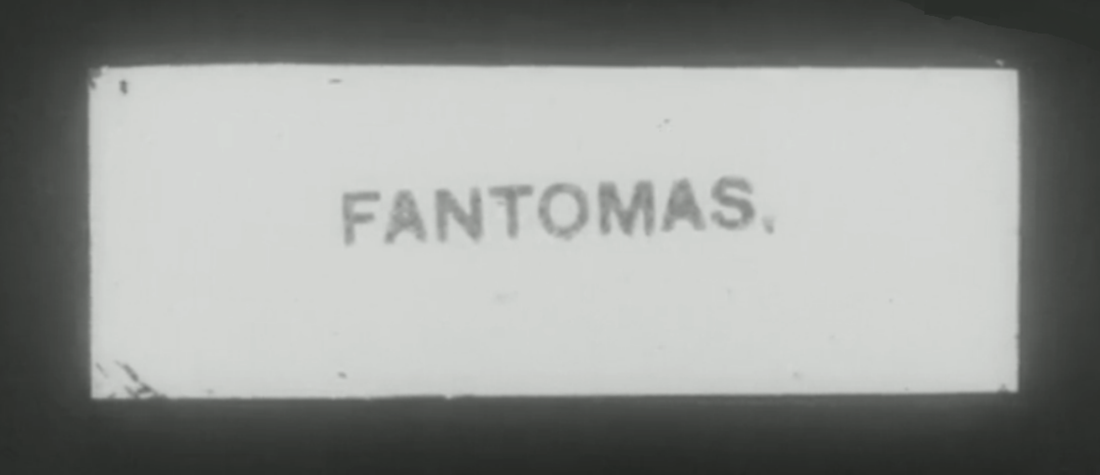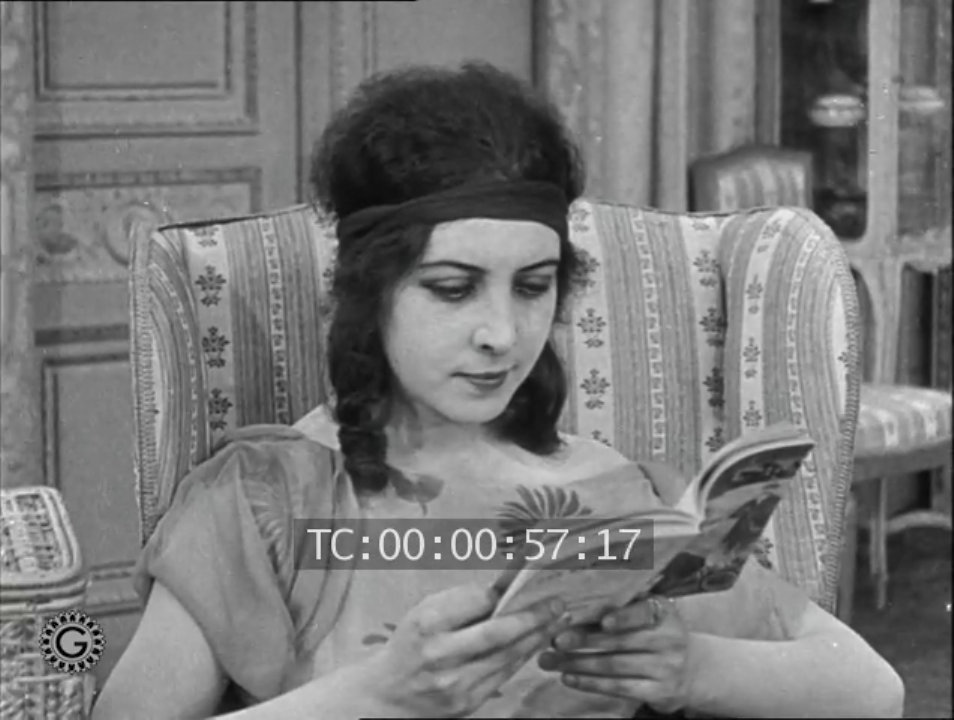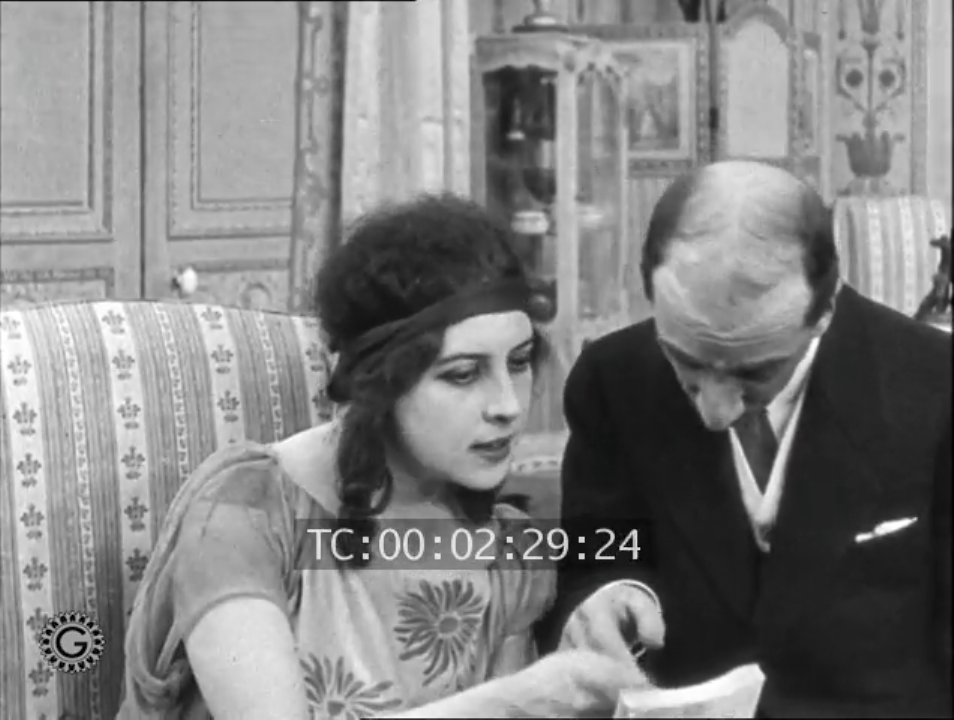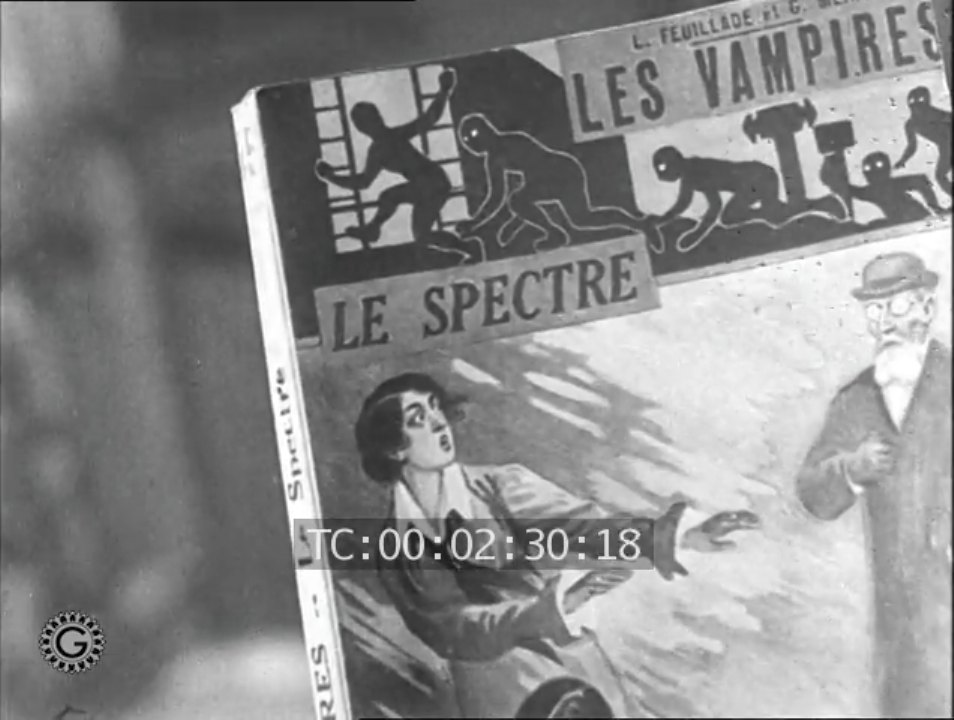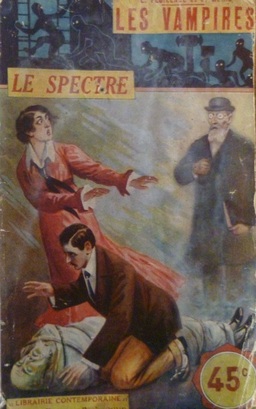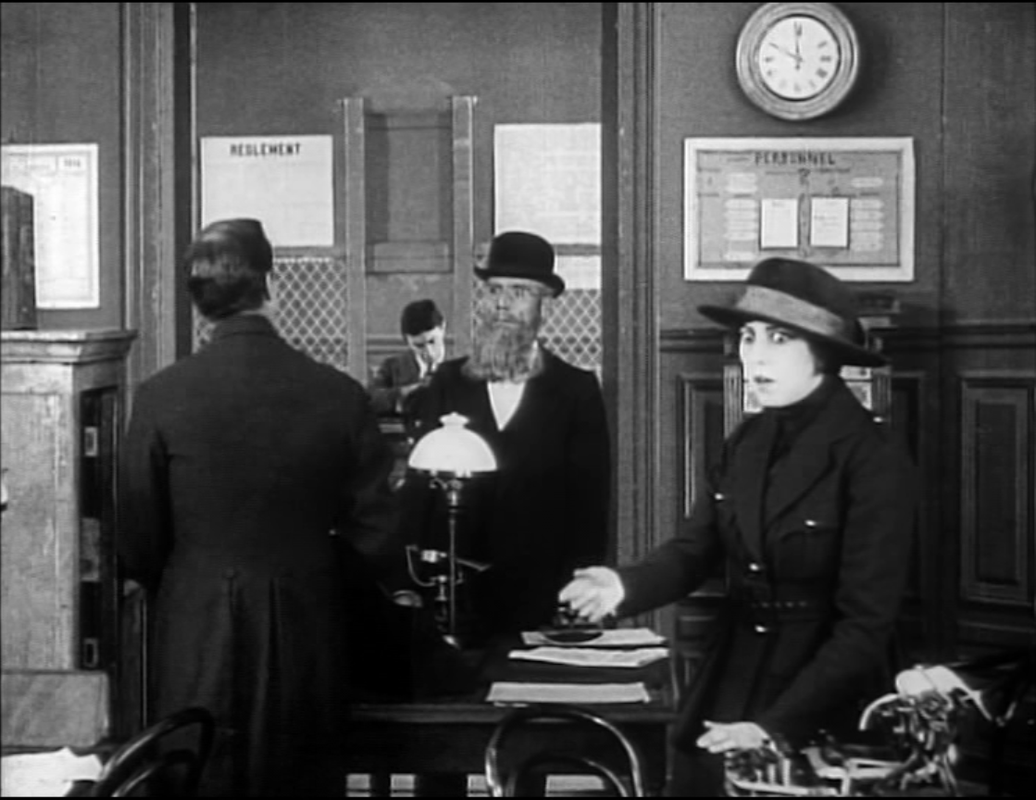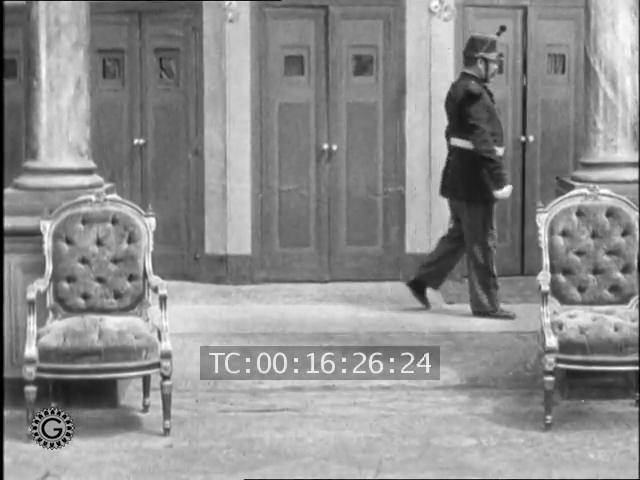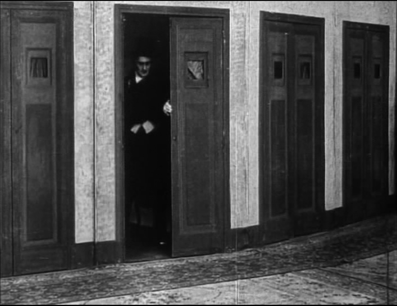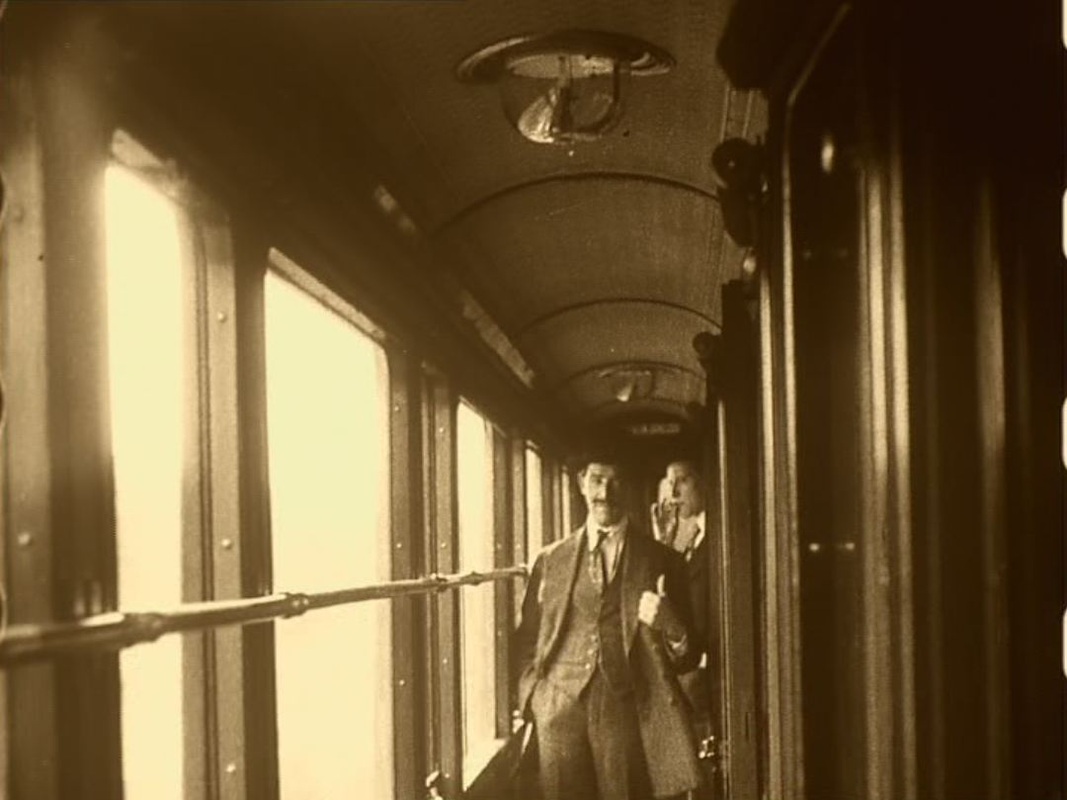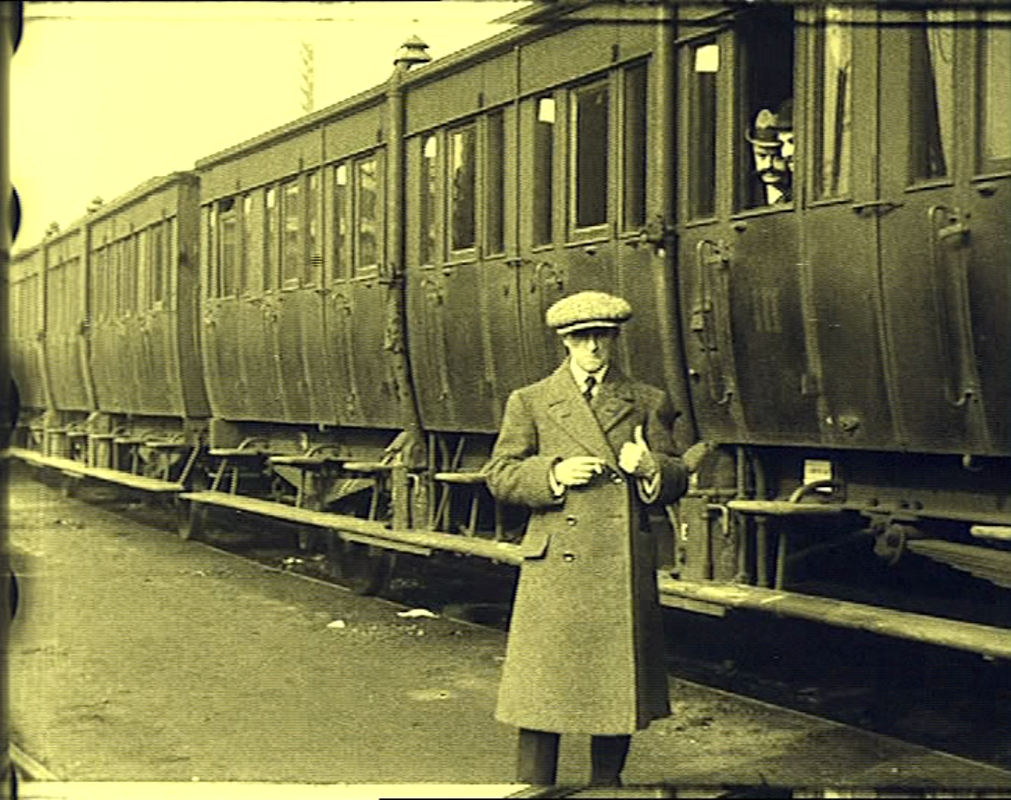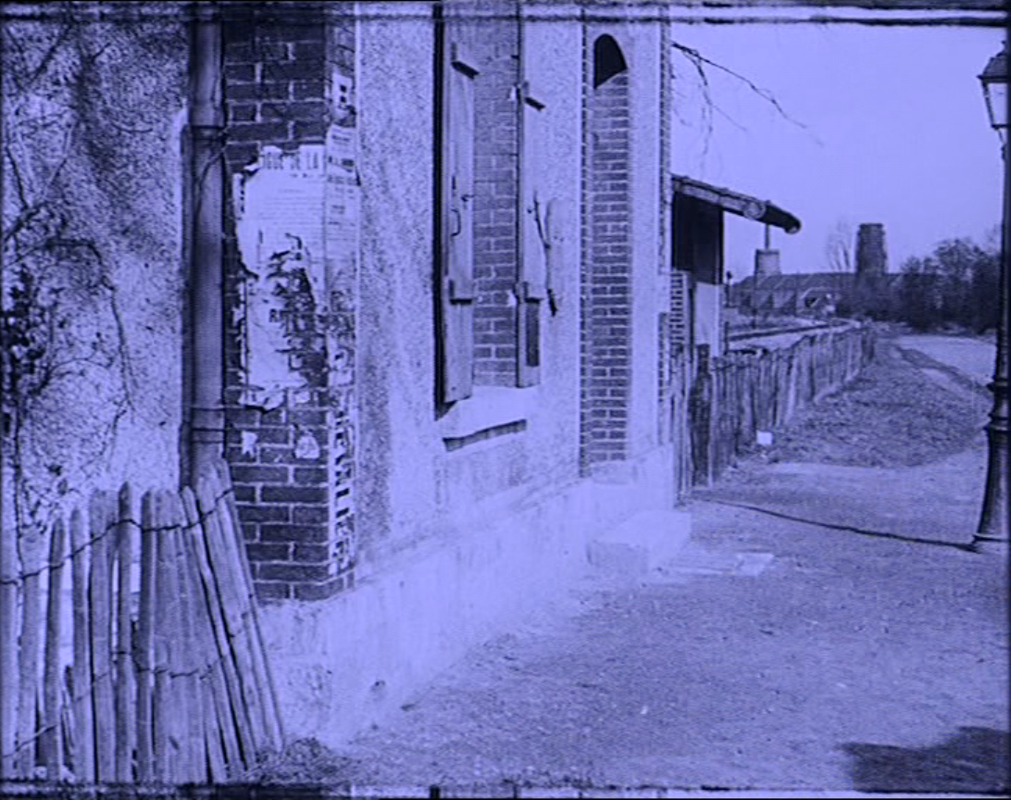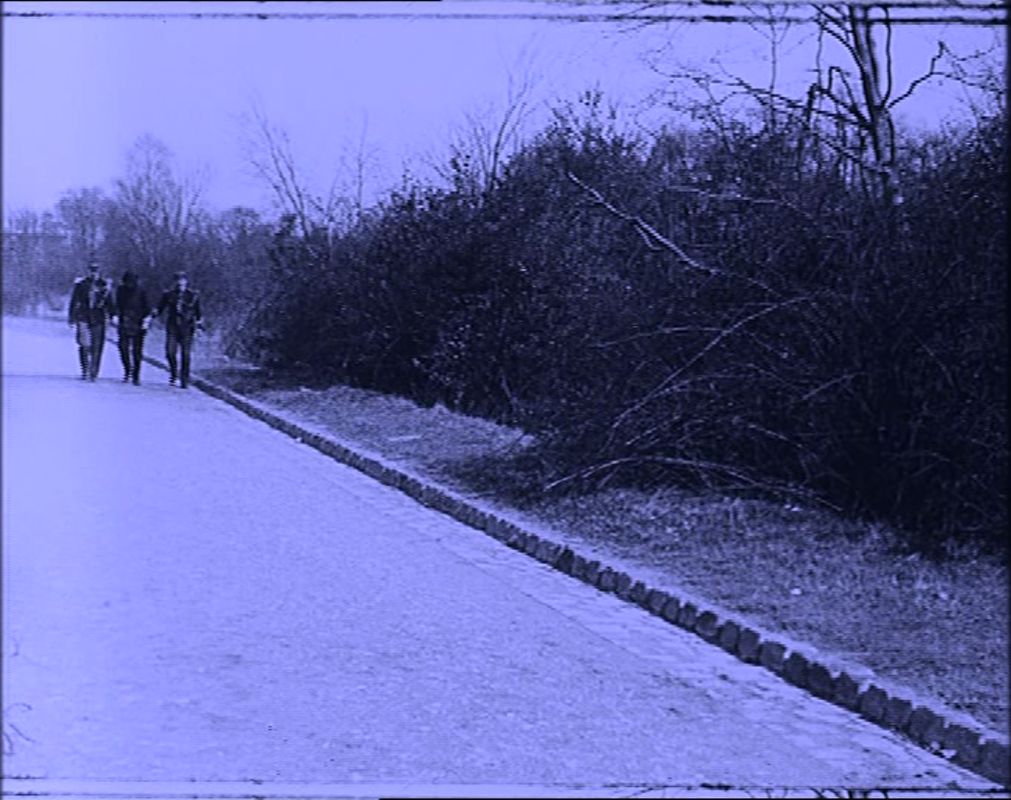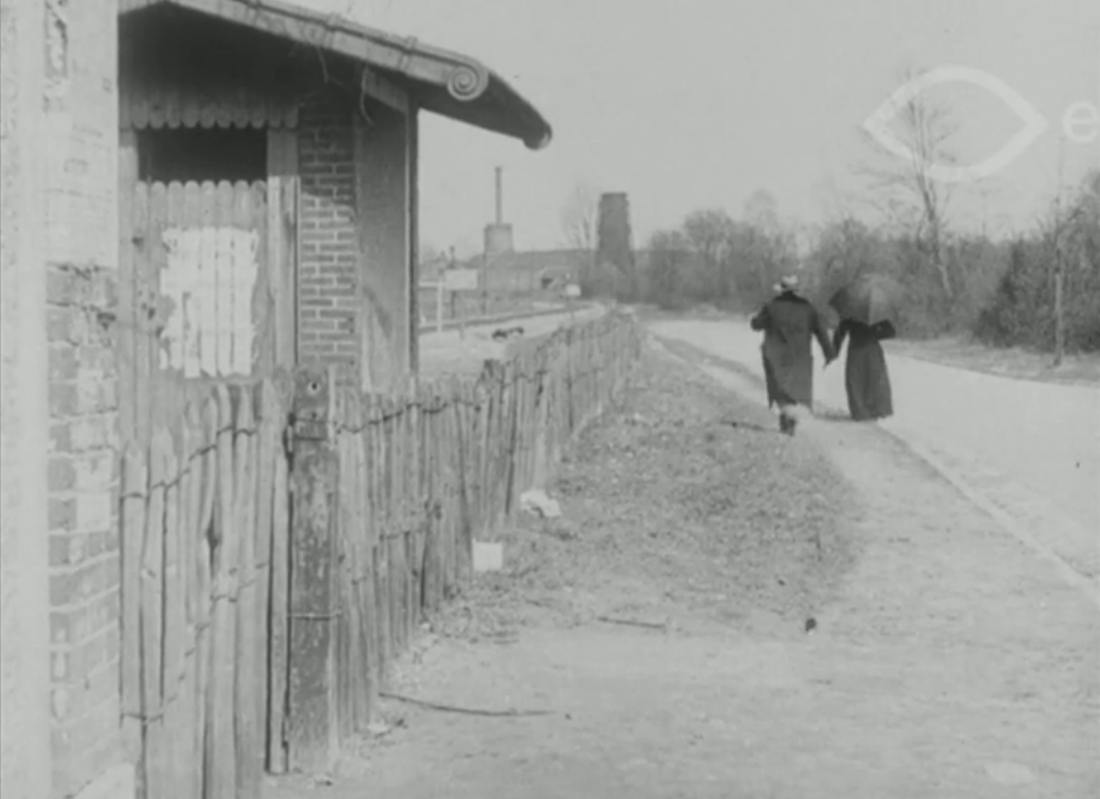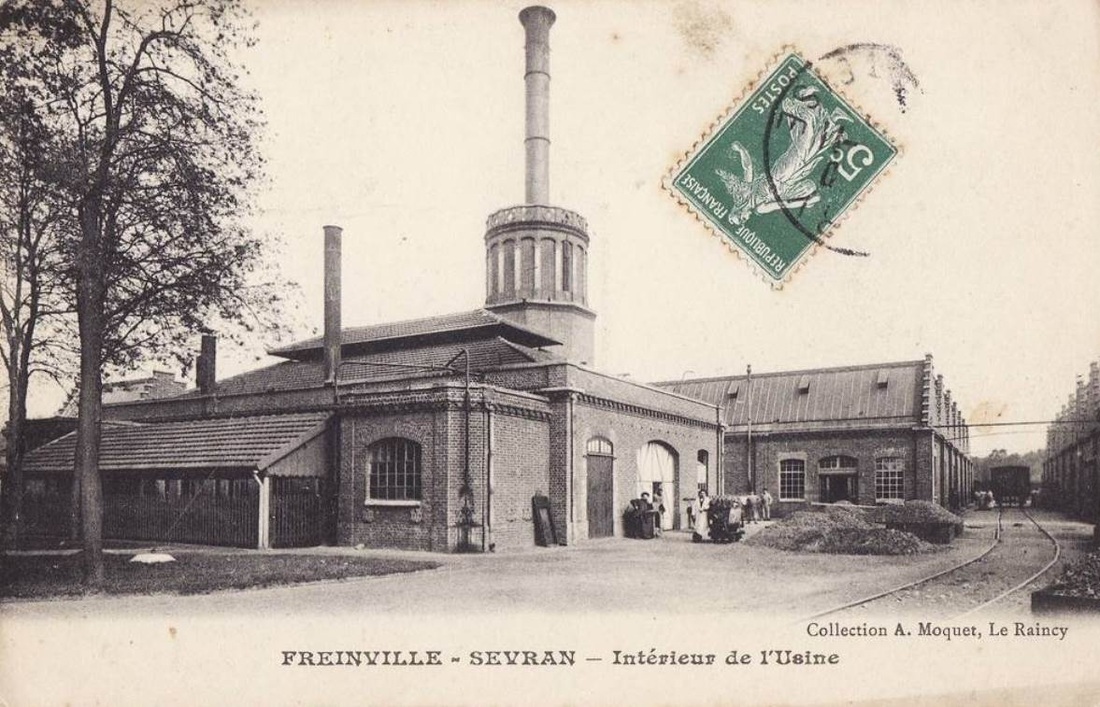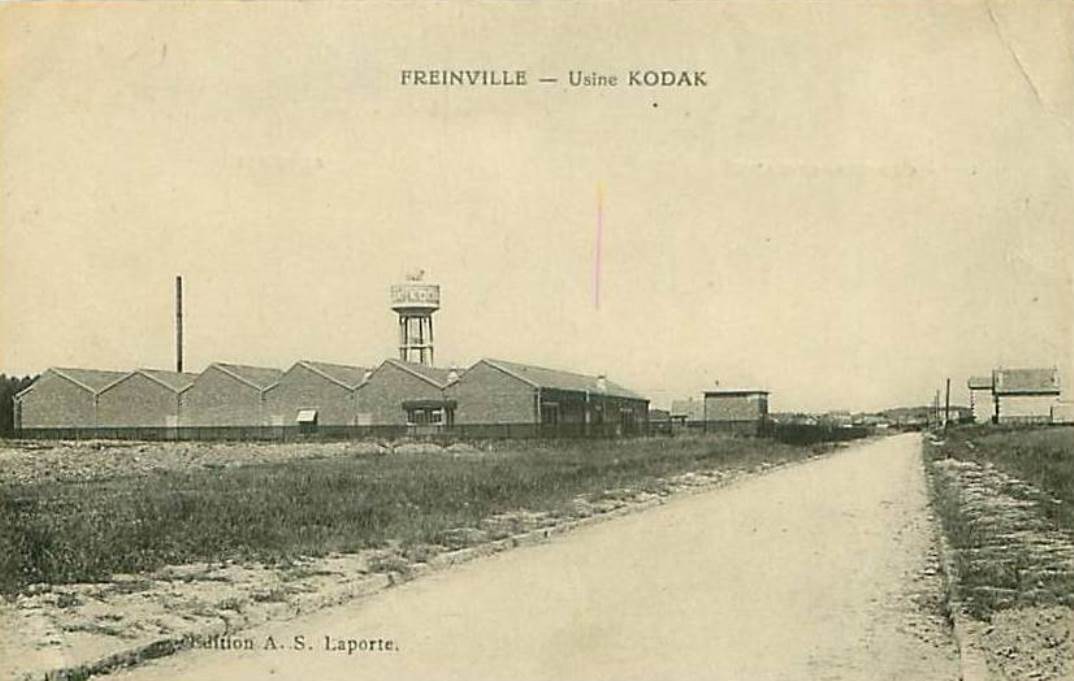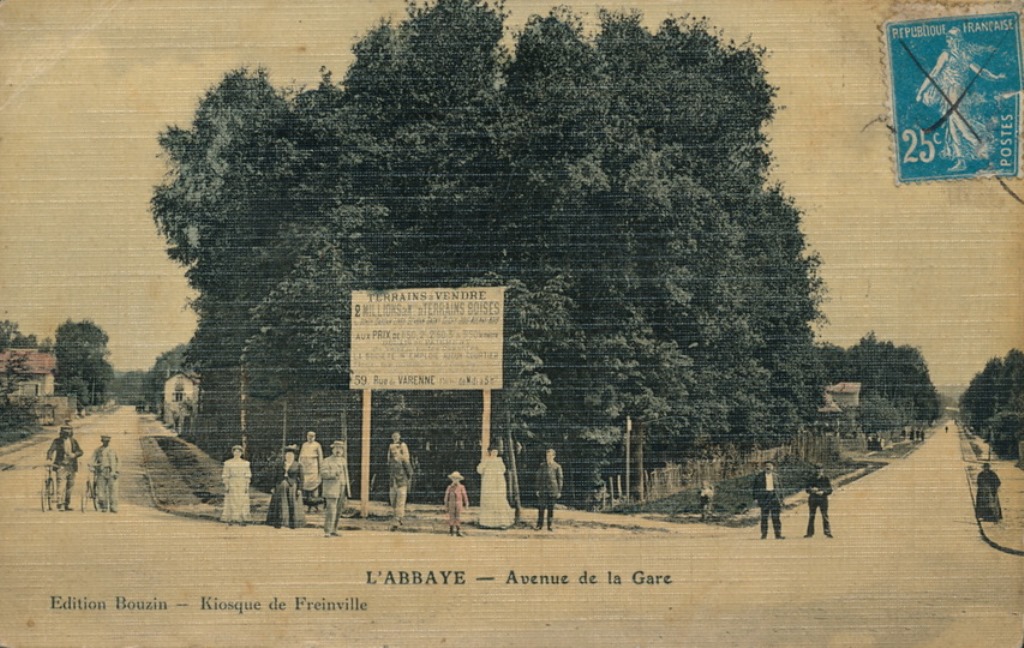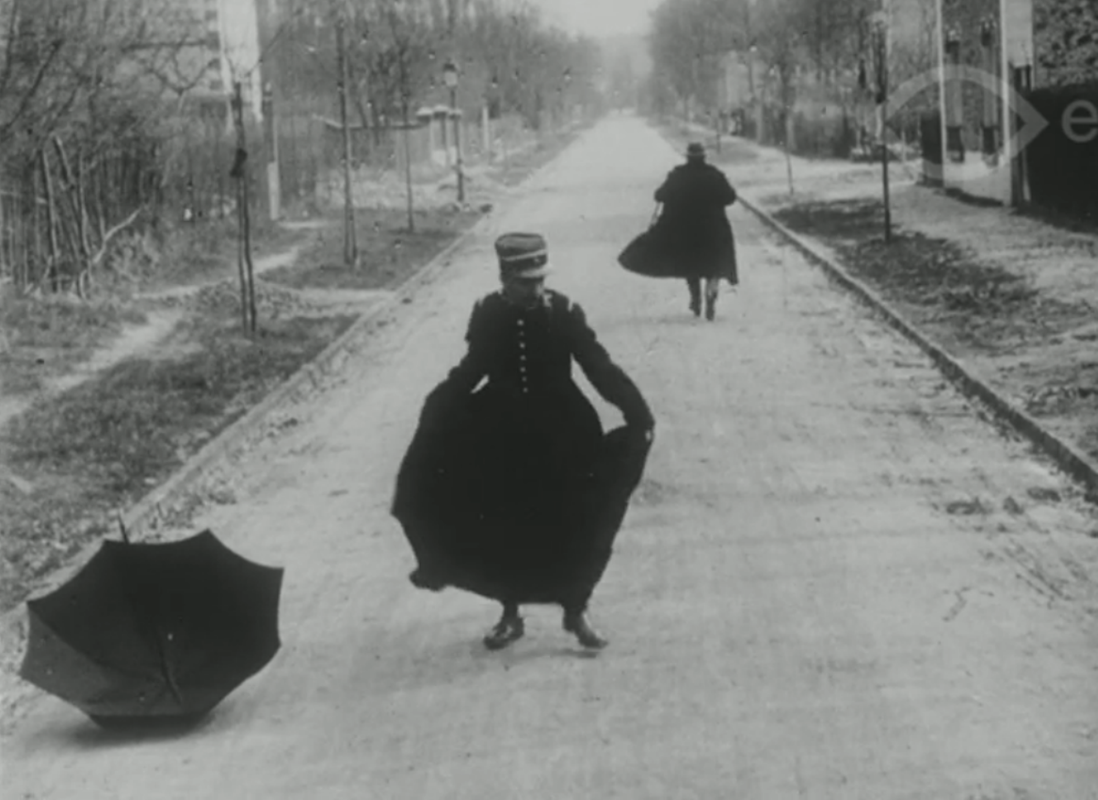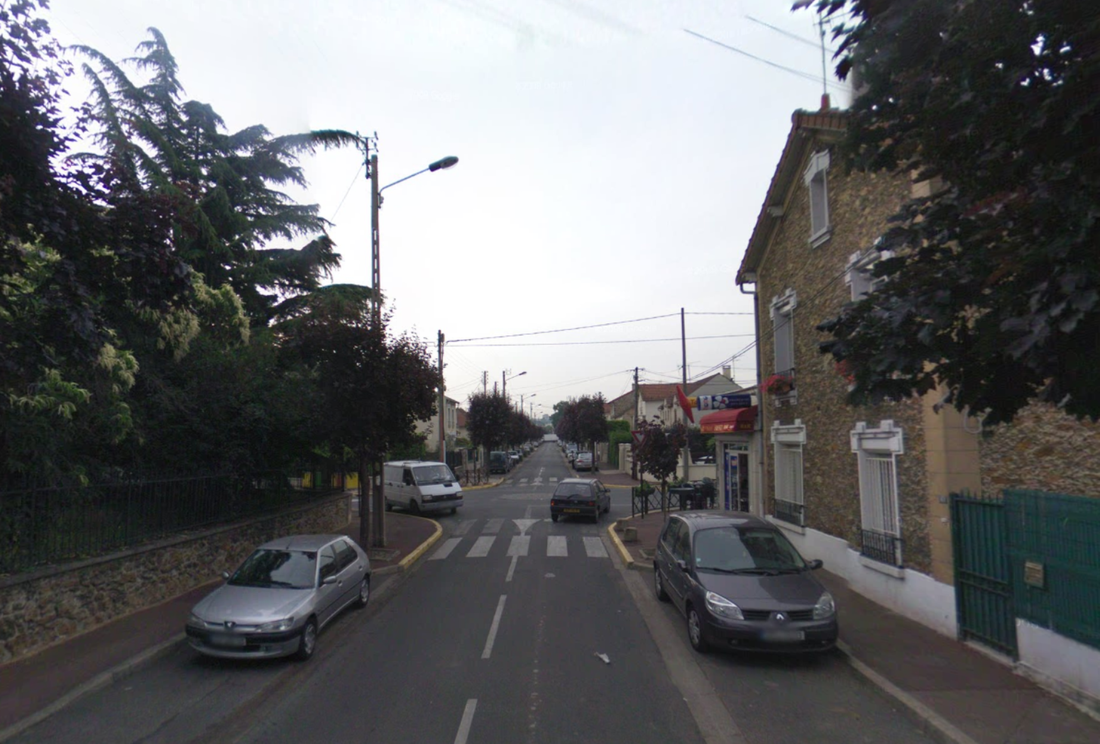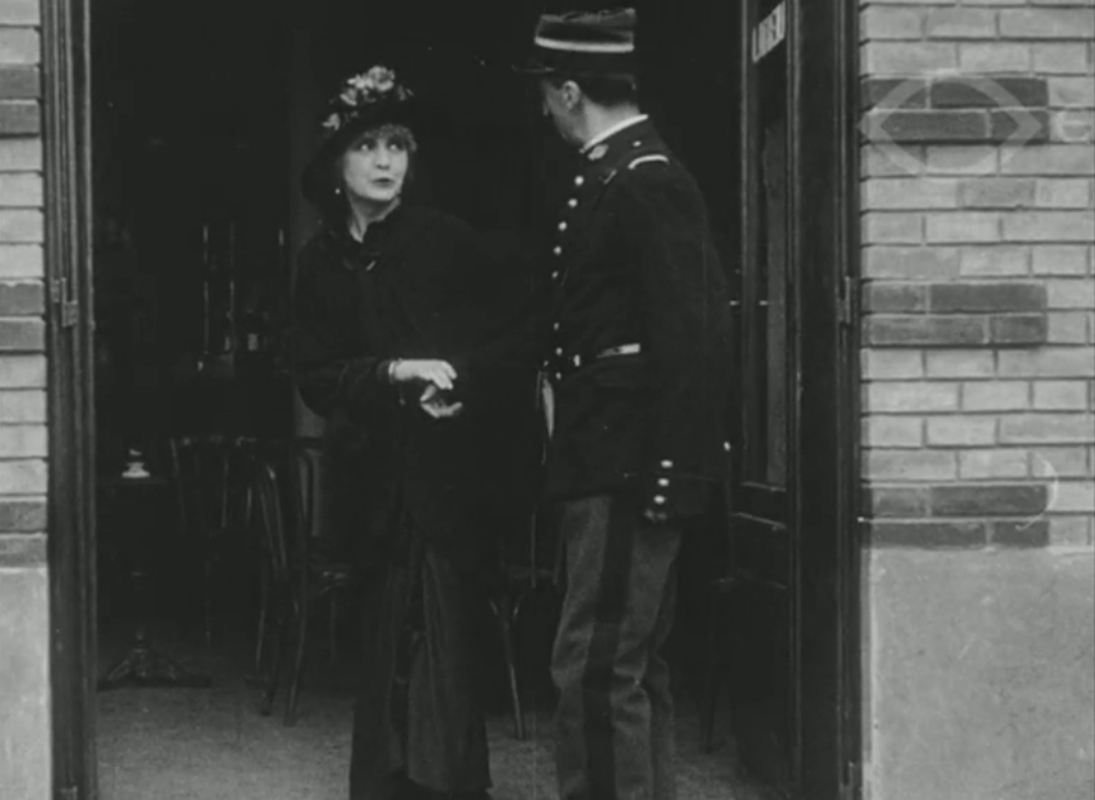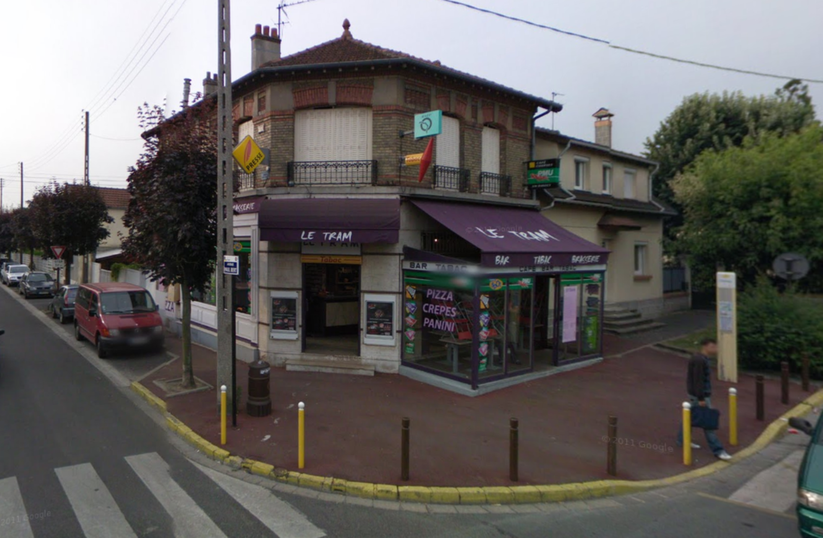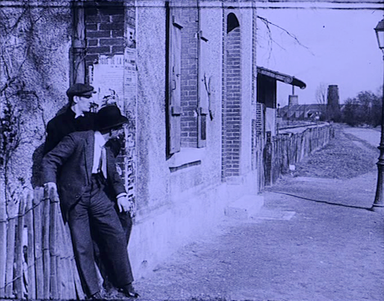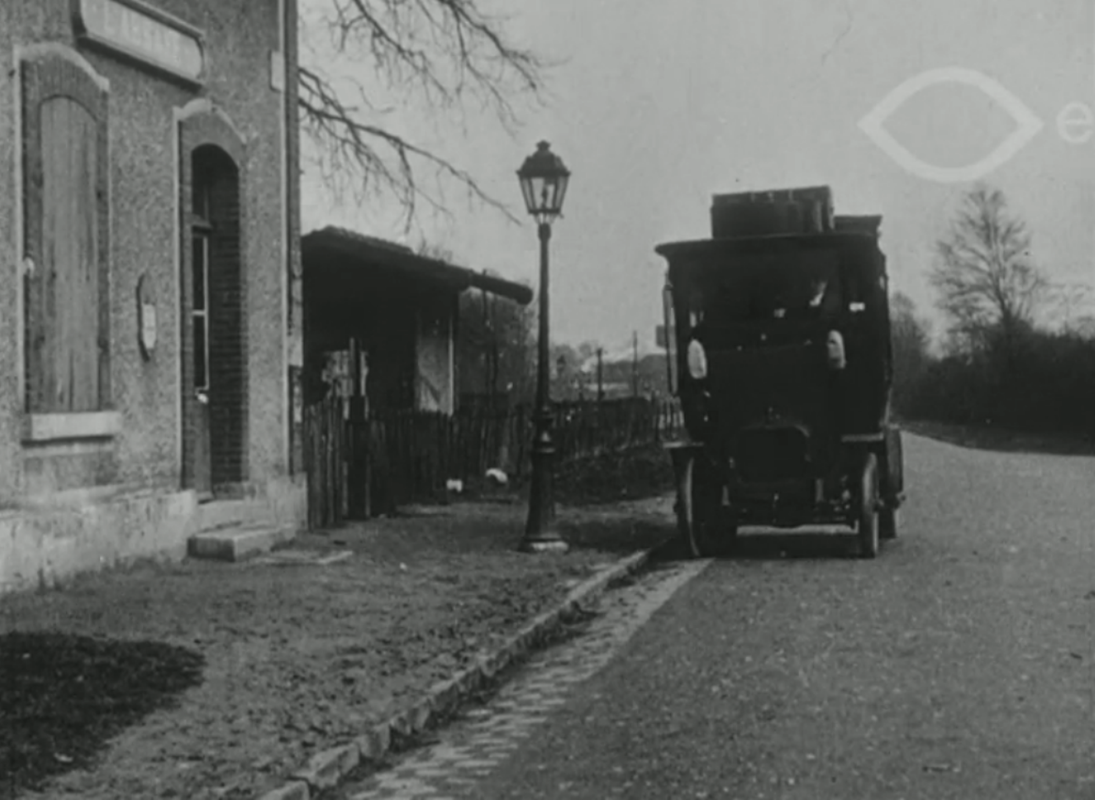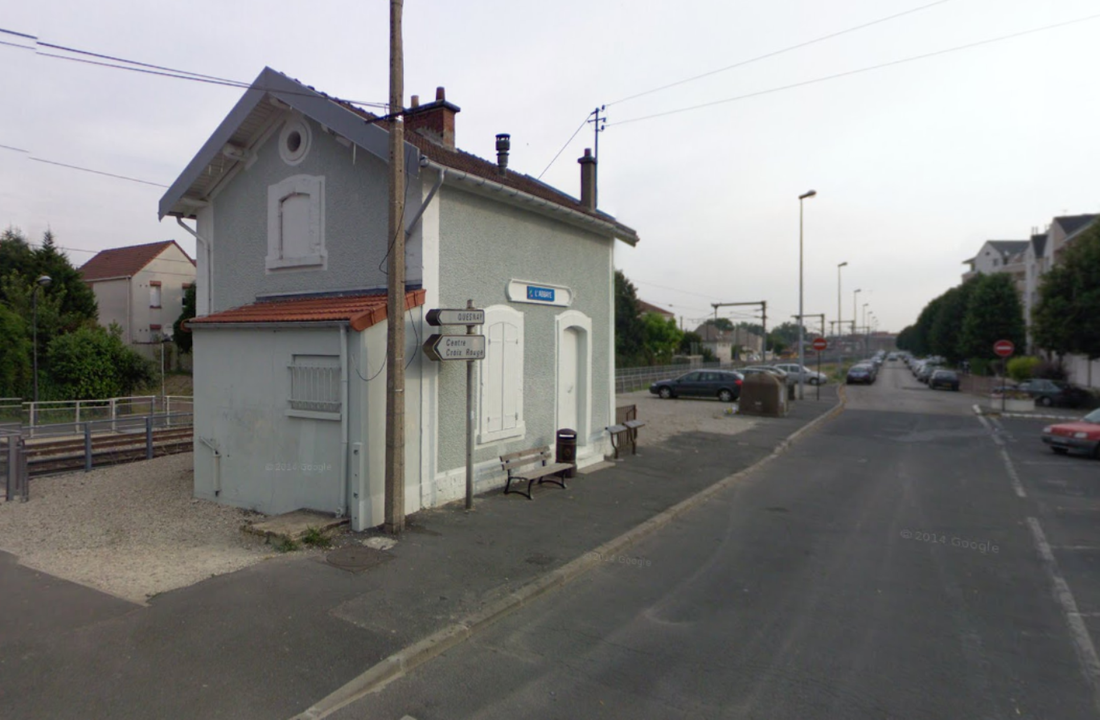Fantômas Over Belgium ...
... and also in the eastern suburbs of Paris, and in places as yet unidentified
episode 5: Le Faux Magistrat
(First screened April 1914.)
In an interview published in Le Courrier Cinématographique, February 1914, Feuillade explained that he preferred not to use theatre actors because they were not always available:
'With our own actors, it's different. We always have them at hand, we can use them at any time of the day. For example, this evening I'm leaving for Belgium and I'll take a troupe of actors with me; last night, they knew nothing about it and this evening they'll be en route. I couldn't do that with theatre actors.'
The trip to Belgium was to film the Louvain sequences of Le Faux Magistrat. Fantômas escapes from the city's prison, disguised as a prison officer:
'With our own actors, it's different. We always have them at hand, we can use them at any time of the day. For example, this evening I'm leaving for Belgium and I'll take a troupe of actors with me; last night, they knew nothing about it and this evening they'll be en route. I couldn't do that with theatre actors.'
The trip to Belgium was to film the Louvain sequences of Le Faux Magistrat. Fantômas escapes from the city's prison, disguised as a prison officer:
Having changed into civilian clothing, he crosses the place du Vieux Marché:
Then arrives at the railway station:
Fantômas had headed south on leaving the prison, but actually if he'd gone north he would have arrived at the railway station in five minutes. Prison and station are both on the eastern outskirts of the city. His excursion into the centre was unnecessary - included perhaps to allow the audience to enjoy the sights of Louvain before the film moved on.
It was just as well that Fantômas visited the city when he had the chance. If he'd returned a few months later he would have found Louvain devastated by German bombing and occupied by the German army:
The other location of this episode is, apparently, the small town of Saint-Calais, in La Sarthe, 190 kilometres south-west of Paris. Here are some views of Saint-Calais:
None of these locations matches what we see in Le Faux Magistrat because none of this episode, as far as I can work out, was actually filmed at Saint-Calais. Feuillade represents this small provincial town by assembling elements from the easterly suburbs of Paris. The Palais de Justice is in fact the Saint Germain church in Pantin:
A selective view of the steps allows the church to pass for a secular edifice.
The post office at Saint-Calais is represented by the post office at Bobigny:
The post office at Saint-Calais is represented by the post office at Bobigny:
Bobigny also provides the location for what is supposed to be the railway station at Saint-Calais:
There are six other places supposed to be in or near Saint-Calais that I haven't identified but which I strongly suspect are in this same Pantin-Bobigny-Gargan area:
Update May 2020:
When looking for locations for a different Feuillade film, I came across the tunnel under the railway bridge, above right:
When looking for locations for a different Feuillade film, I came across the tunnel under the railway bridge, above right:
This is the Rue d'Yerres, just west of Brunoy, where Feuillade like to go to film railway scenes.
The episode's other exteriors are associated with Fantômas's train journey. I have little hope of identifying any of these, but I would guess they are at Brunoy or nearby:
Though the bridge from which Fantômas throws the body of the judge whose identity he assumes does look like the bridge over the Marne at Isles-les-Villenoy:
The excursion to Belgium resulted in just under three minutes of the film we now have, which doesn't seem much in return for the effort. Perhaps there was more Louvain material in what has been lost of this episode. Perhaps, also, Feuillade kept up the practice of working on more than one film in the course of an excursion. Though nothing in the filmography from around February 1914 suggests a film made in Belgium, we can see Feuillade doubling up on a location when he takes his troupe to Gargan l'Abbaye. What we see of Gargan l'Abbaye in Le Faux Magistrat is chiefly the railway station:
Feuillade's short comedy Le Gendarme est sans culotte [The Policeman Has No Trousers] shows a troupe of cinema actors arriving to make a film at this same location:
The film they are going to make involves the arrest of two criminals, just like the sequence in Le Faux Magistrat:
When the shoot is disrupted by some comic business we can see that the two men being arrested are the same two who are arrested in Le Faux Magistrat:
They are even wearing the same clothes, strongly suggesting that the two sequences were shot around the same time - on the same day, probably.
Georges Melchior, who plays Fandor in the Fantômas films and is involved in the arrest at Gargan l'Abbaye, is also in Le Gendarme est sans culotte. I cannot match with certainty the arresting policemen in the two films:
Georges Melchior, who plays Fandor in the Fantômas films and is involved in the arrest at Gargan l'Abbaye, is also in Le Gendarme est sans culotte. I cannot match with certainty the arresting policemen in the two films:
Le Gendarme est sans culotte is a lightweight farce lasting less than twenty minutes, whereas the Le Faux Magistrat is the tense and violent climax to an epic of crime lasting more than five hours. I had assumed, initially, that the former was a frivolous afterthought, made to make the most of time left over once the serious filming was done, but I think now that it was the other way round. The sequence shot at Gargan l'Abbaye for Le Faux Magistrat lasts less than a minute and uses only five actors: Georges Melchior, the two policemen and the two members of Fantômas's gang:
Whereas the Gargan l'Abbaye part of Le Gendarme est sans culotte lasts at least four minutes and involves at least fourteen actors. It is the arrest scene for Fantômas that looks more like an afterthought, shot at Gargan l'Abbaye out of convenience because Feuillade was going to be there anyway, working on an episode in his successful 'La Vie drôle' series, with one of his biggest stars, Marcel Levesque:d
Or perhaps it was all the result of meticulous planning. a careful calculation to maximise resources. The matching of the two arrests suggests co-ordination, as does the sensational climax of Le Gendarme est sans culotte. After Levesque's policeman is robbed of his trousers by the film crew he is chased from a hotel, forced to hide in a barrel, which then rolls around the village and countryside, is pursued by a lecherous old man who takes him for a woman, and finally suffers the reproaches of his wife and his superior officer. A punchline is borrowed from the film that had borrowed a location from Le Gendarme est sans culotte, as a piece of paper is found in the pocket of the policeman's trousers, now returned, on which is inscribed a single, terrifying word:
A copy of Le Gendarme est sans culotte is preserved at the EYE Film Instituut Nederland and can be viewed online at Europeana, here.
The interview with Feuillade in Le Courrier Cinématographique was reproduced in the brochure accompanying Gaumont's dvd edition of the Fantômas films.
Appendix 1: Feuilladian comedy as satyr play
Le Gendarme est sans culotte is a little like the satyr play in the context of Greek tragedy, a burlesque adjunct to the serious centrepiece. Feuillade does something similar with his 1916 comedy Lagourdette gentleman cambrioleur, a comic supplement to Les Vampires. Self-reflexivity is taken to a higher plane, here; the film opens with Musidora, as herself, reading the novelisation of Le Spectre, an episode of Les Vampires:
She receives a visit from Marcel Levesque, as Lagourdette, to whom she explains that the Vampires are her heroes:
A close-up of the cover shows an evocation of a scene from the film in which Musidora herself featured:
The rest of Lagourdette gentleman cambrioleur has Levesque unsuccessfully staging a situation in which he appears as a hero to rival the Vampires, with most of the business happening at a theatre.
It is not, I think, a reflexive gesture that the theatre set used is the same as that used in Les Vampires (episode 2):
It is not, I think, a reflexive gesture that the theatre set used is the same as that used in Les Vampires (episode 2):
Appendix 2: a second fourth look
In Juve contre Fantômas, the second episode of the series, we saw Fantômas in the corridor of a railway carriage look to camera and make a gesture with his thumb, indicating disdain for Fandor, who is just behind him:
On a railway station platform in Le Faux Magistrat he does the same thing, looking to camera and gesturing towards the two policemen watching him, to whom he will soon give the slip, easily:
Appendix 3: Gargan-l'Abbaye, 100 years later
What we see of this district in the two films discussed suggests a somewhat rural environment:
But actually this is a suburb in the throes of development. In the background of the images on the left can be seen the Westinghouse brake factory at Freinville, where Kodak also had a factory:
In this postcard of the avenue de la Gare - the right fork - we see a panel announcing the sale of plots for building:
Here is (I think), the avenue de la Gare, a few years on, in Le Gendarme est sans culotte:
And here (if my identification is correct) is that avenue now:
The Café de la Gare features in Le Gendarme est sans culotte:
The name has changed, because the railway line is now a tram line, but the building has not.
The railway station seen in both films is also unchanged:
The railway station seen in both films is also unchanged:
For discussion of the preceding four episodes of Fantômas see:
Films by Feuillade are also discussed in the following posts:
Films by Feuillade are also discussed in the following posts:
- Feuillade's lonely villas (Le Destin des mères, L'Oubliette, Un scandale au village, Fantômas, Les Vampires, Judex, Barrabas)
- Three filmmakers in Romainville (Une dame vraiment bien)
- A staircase in Belleville (Les Vampires)
- Irma Vep posts a letter (Les Vampires)
- Inside-Outside: space and light in Judex


